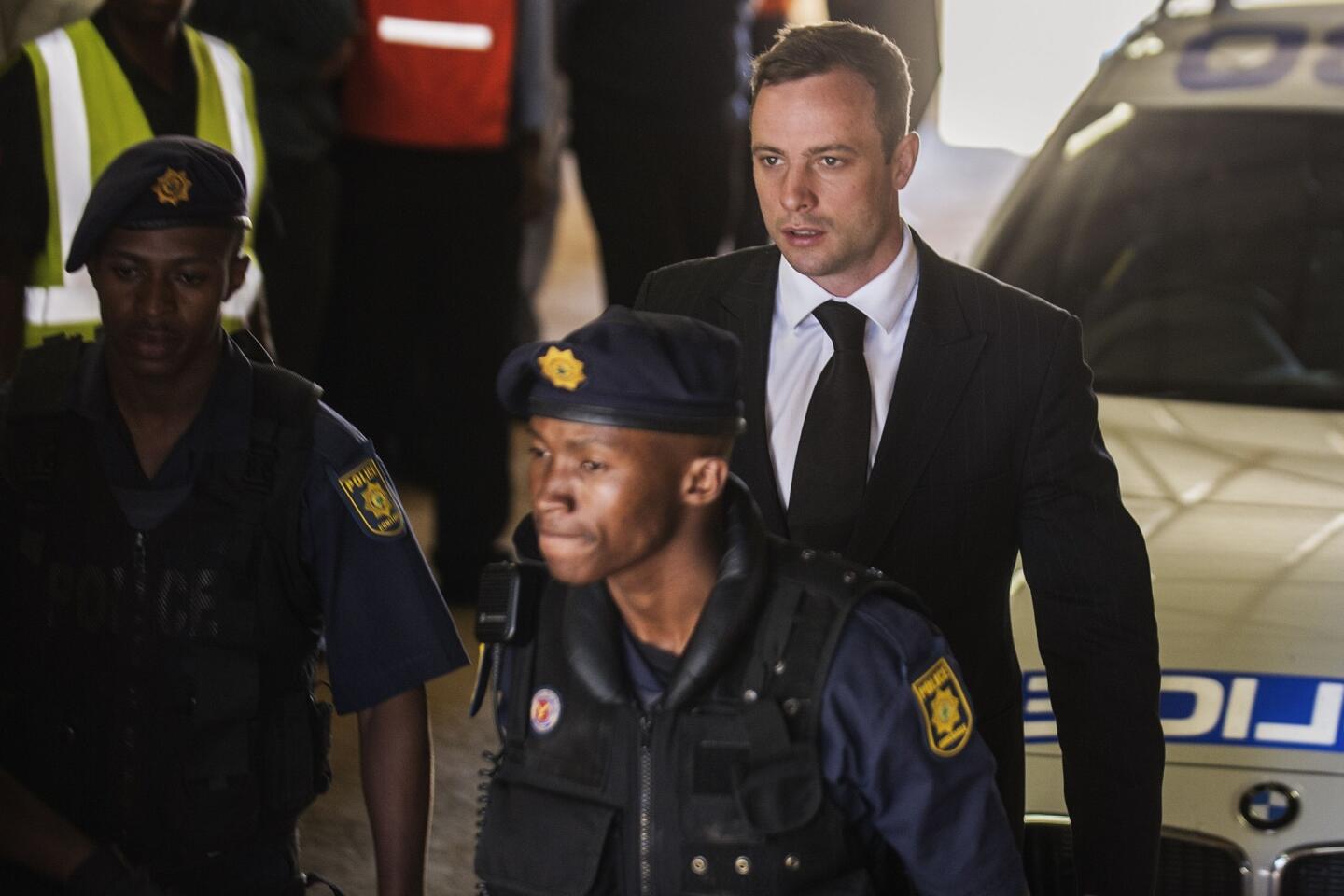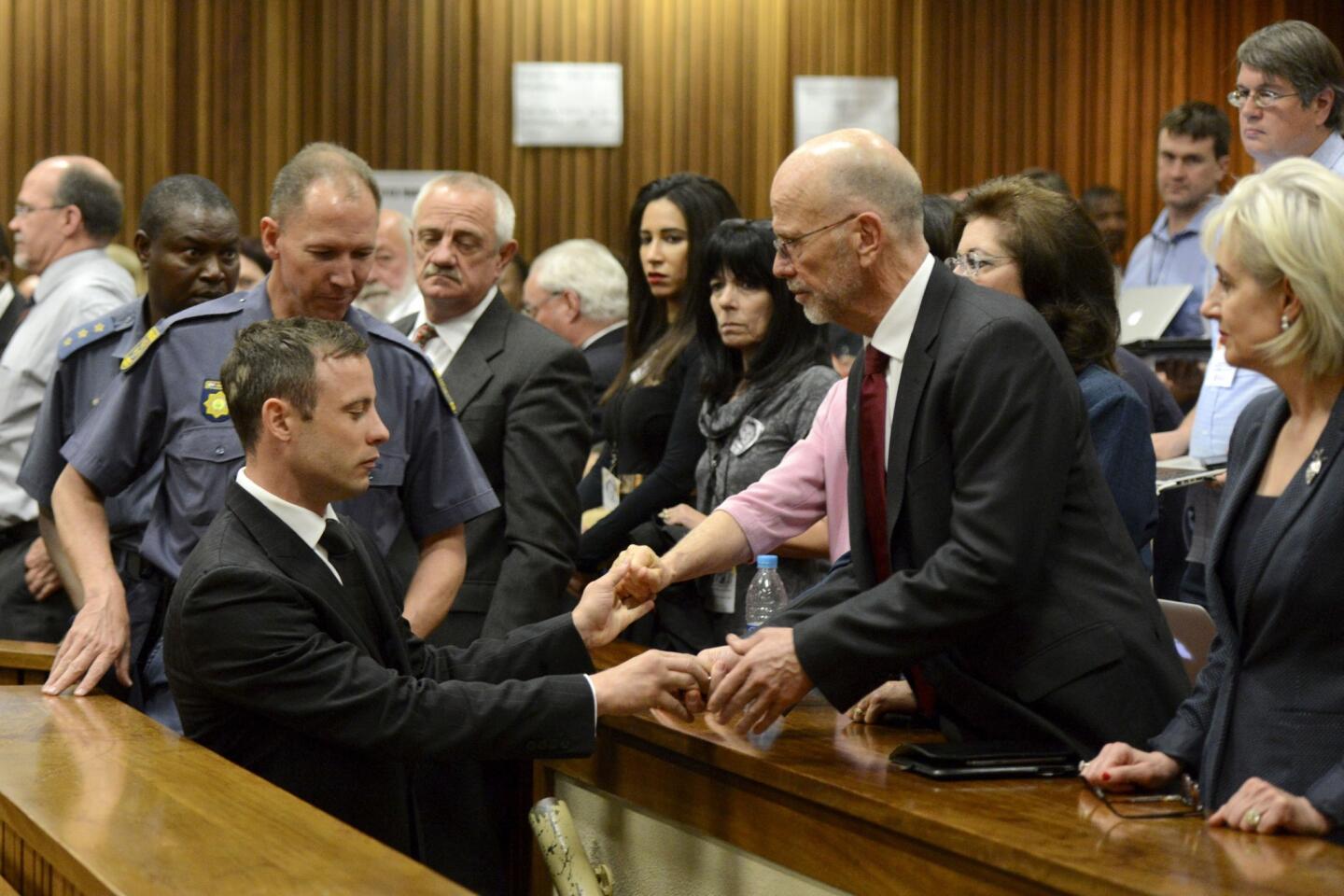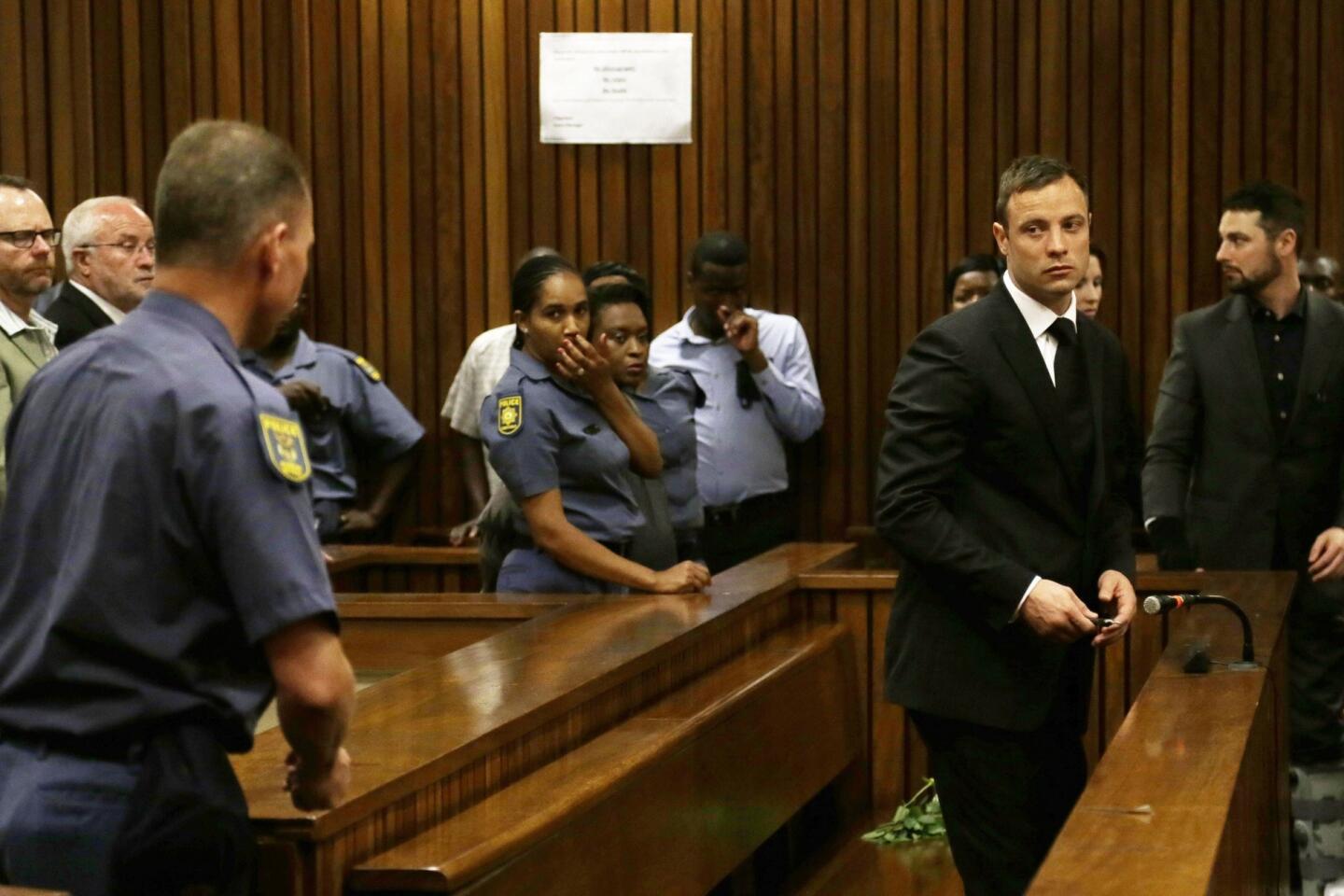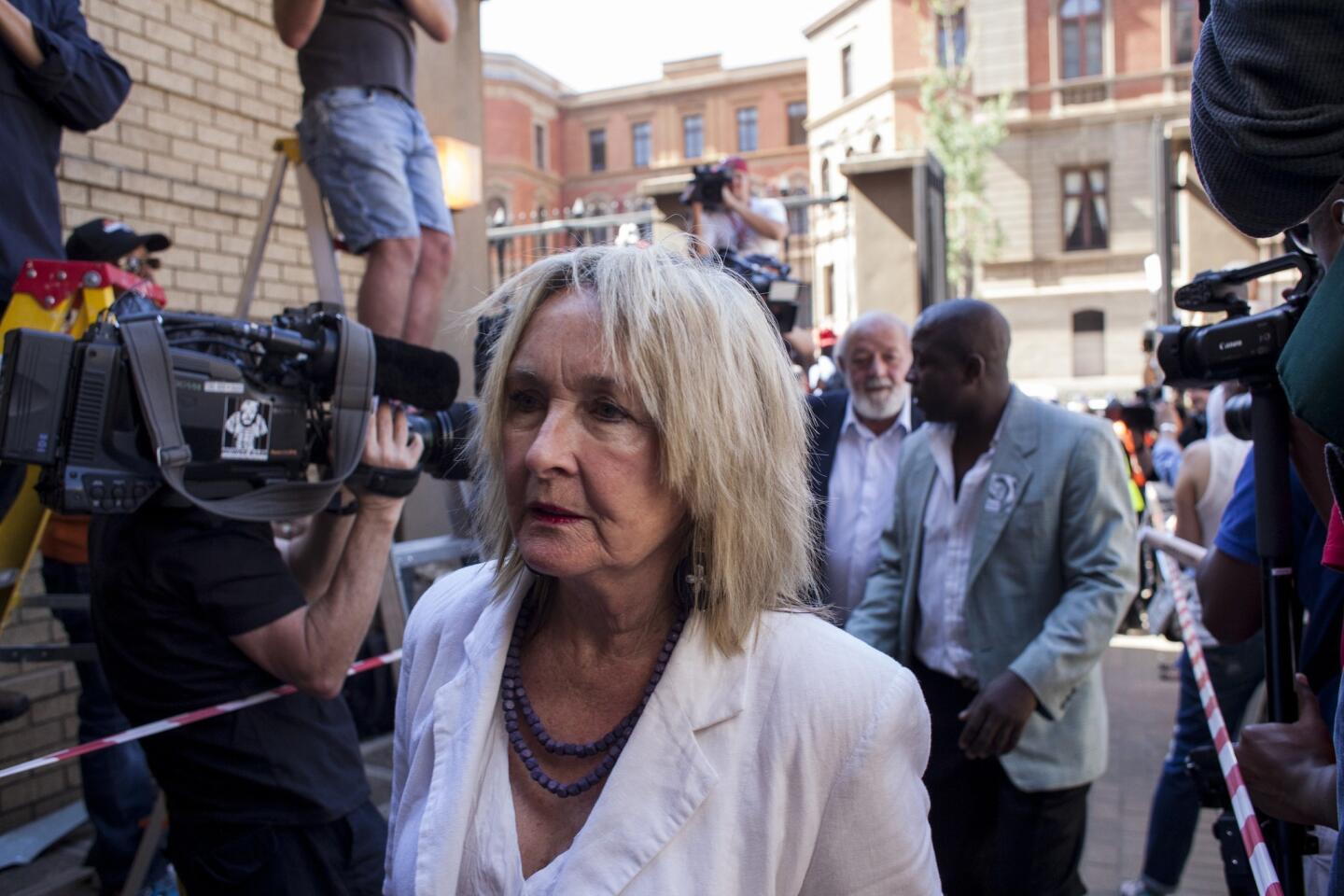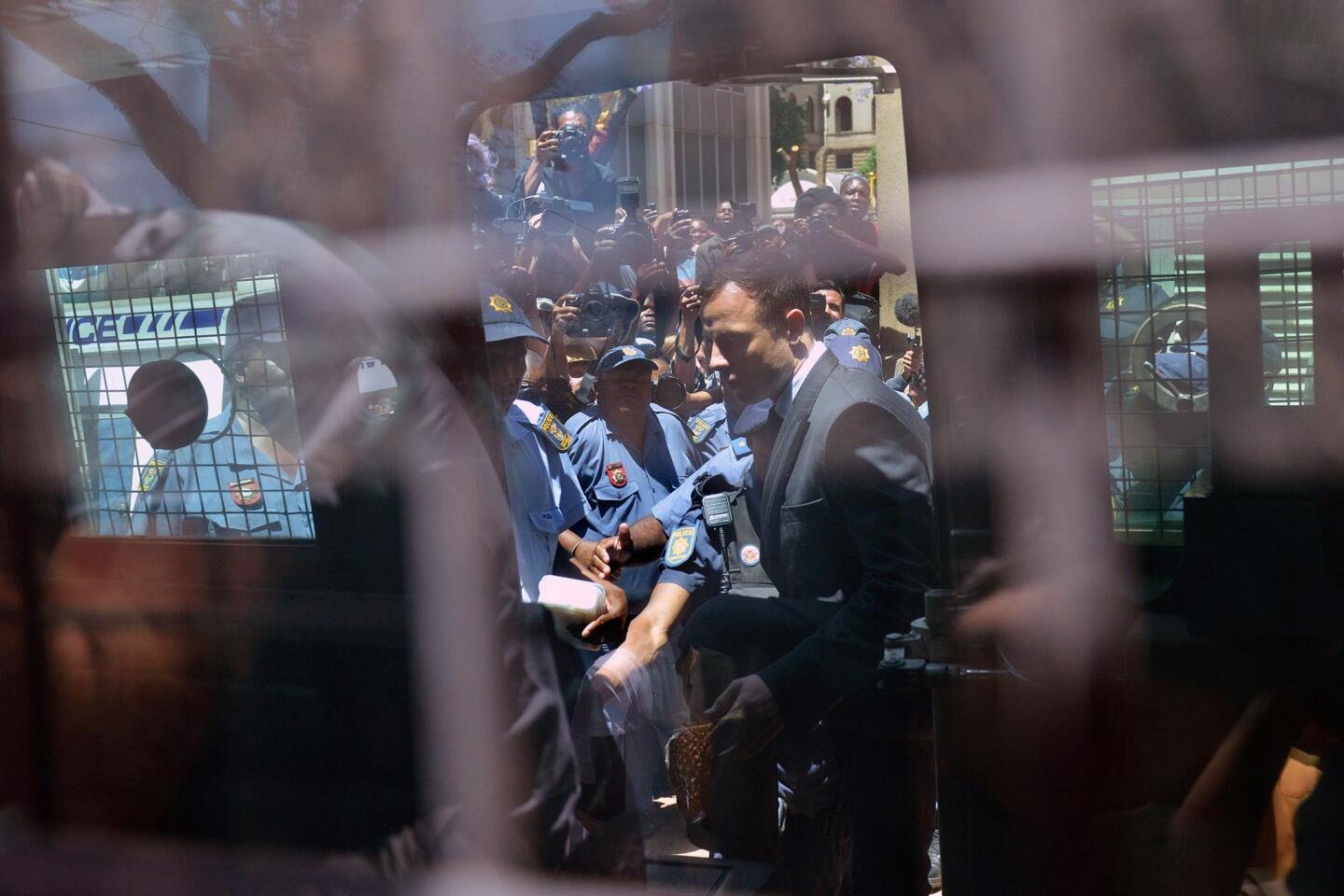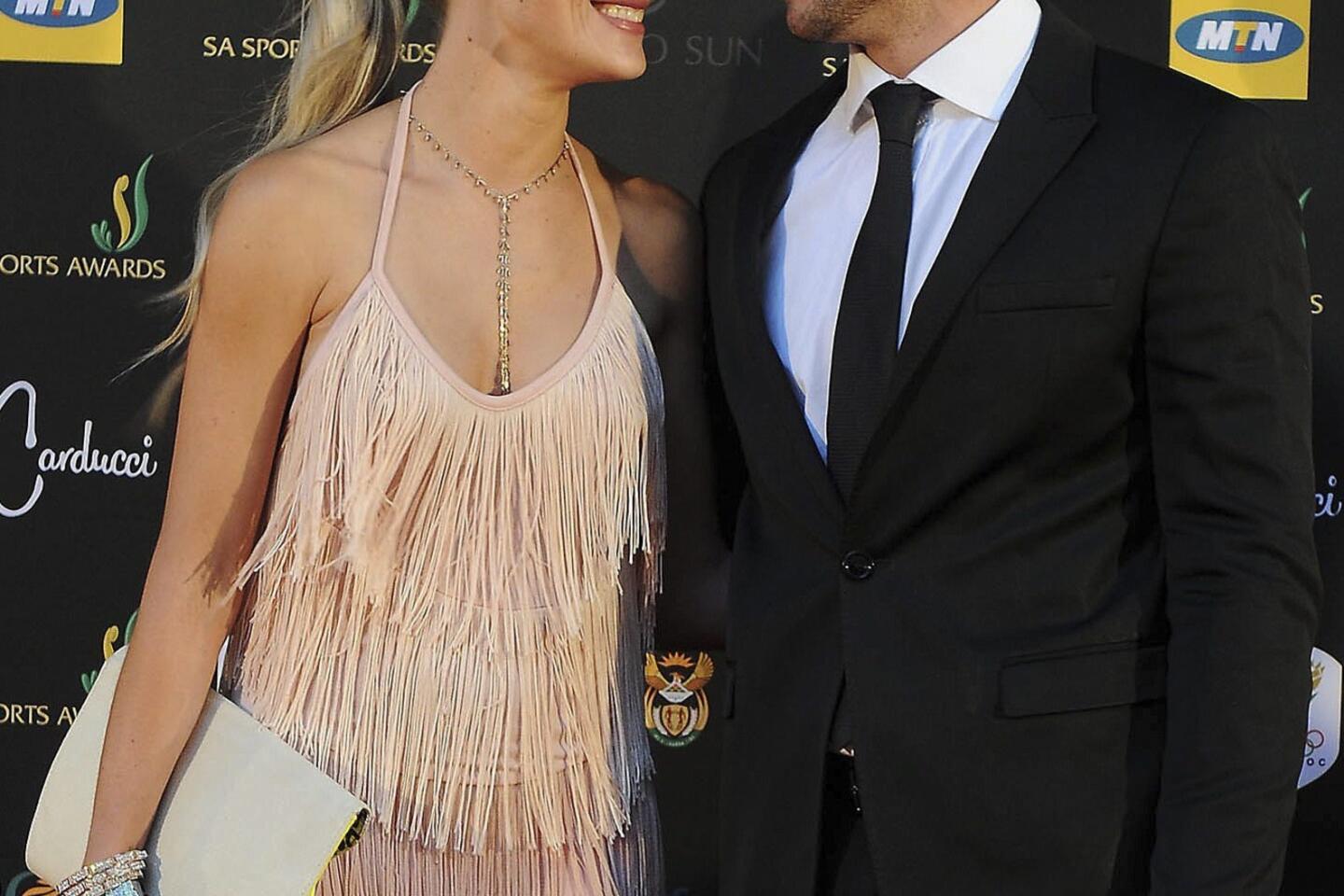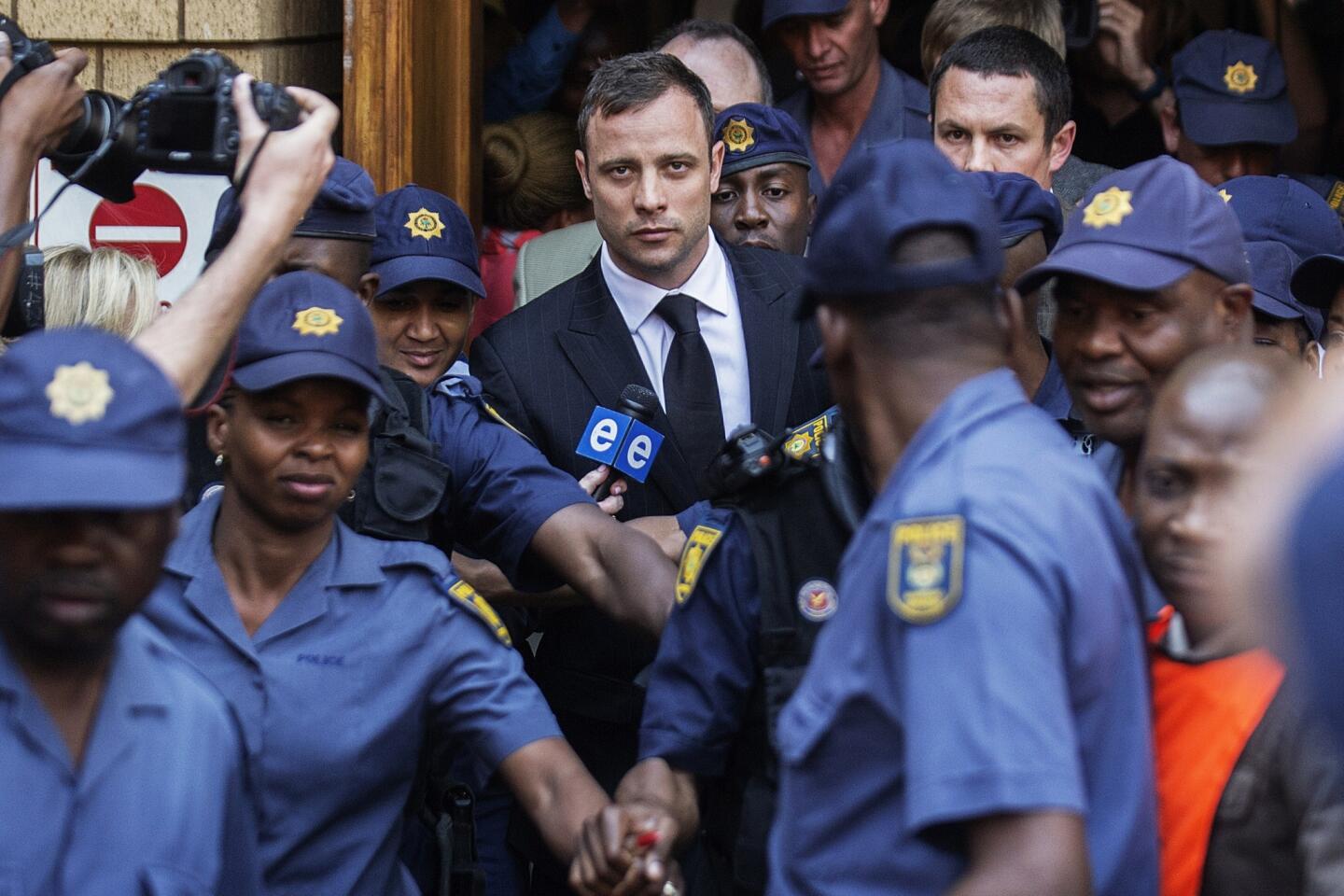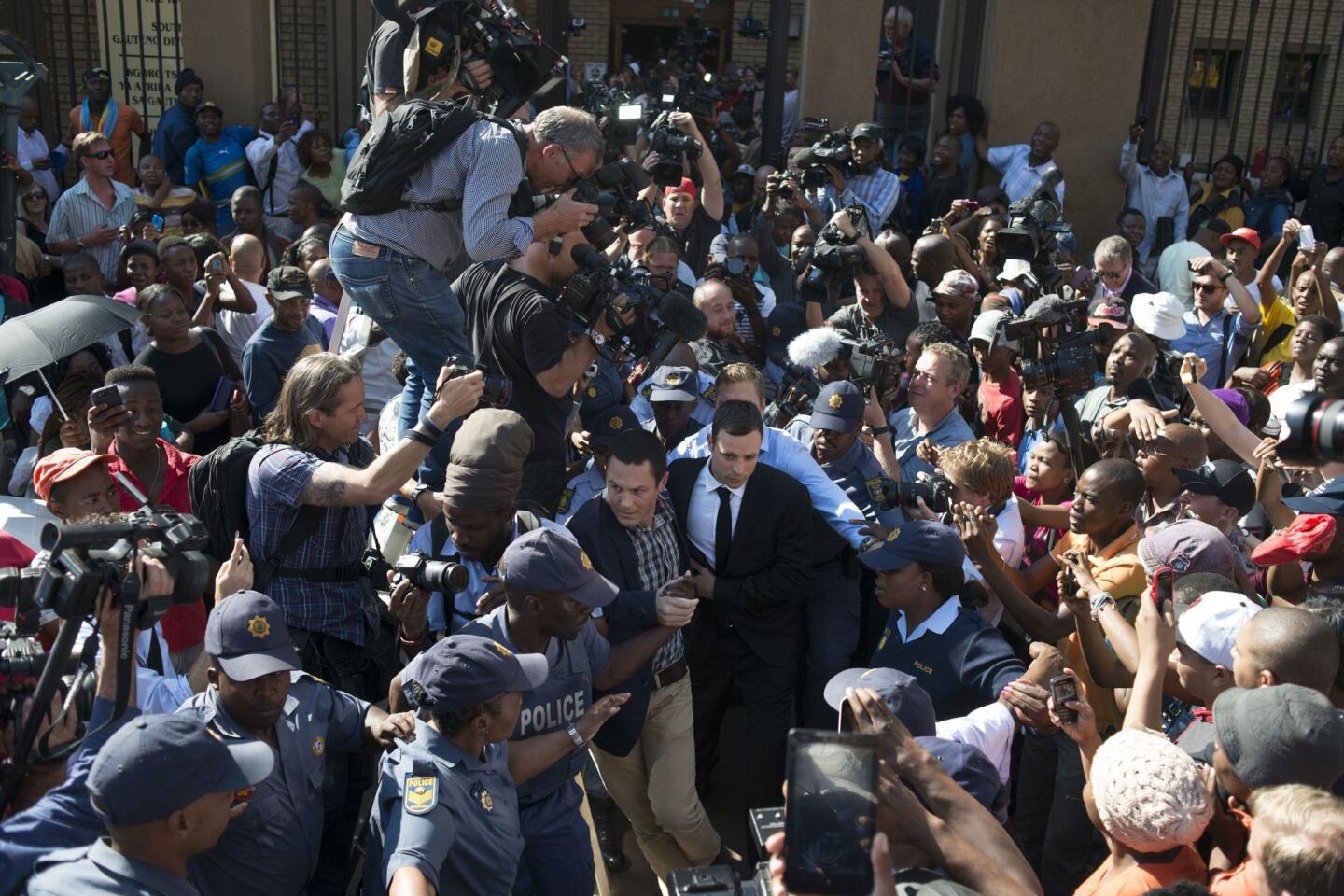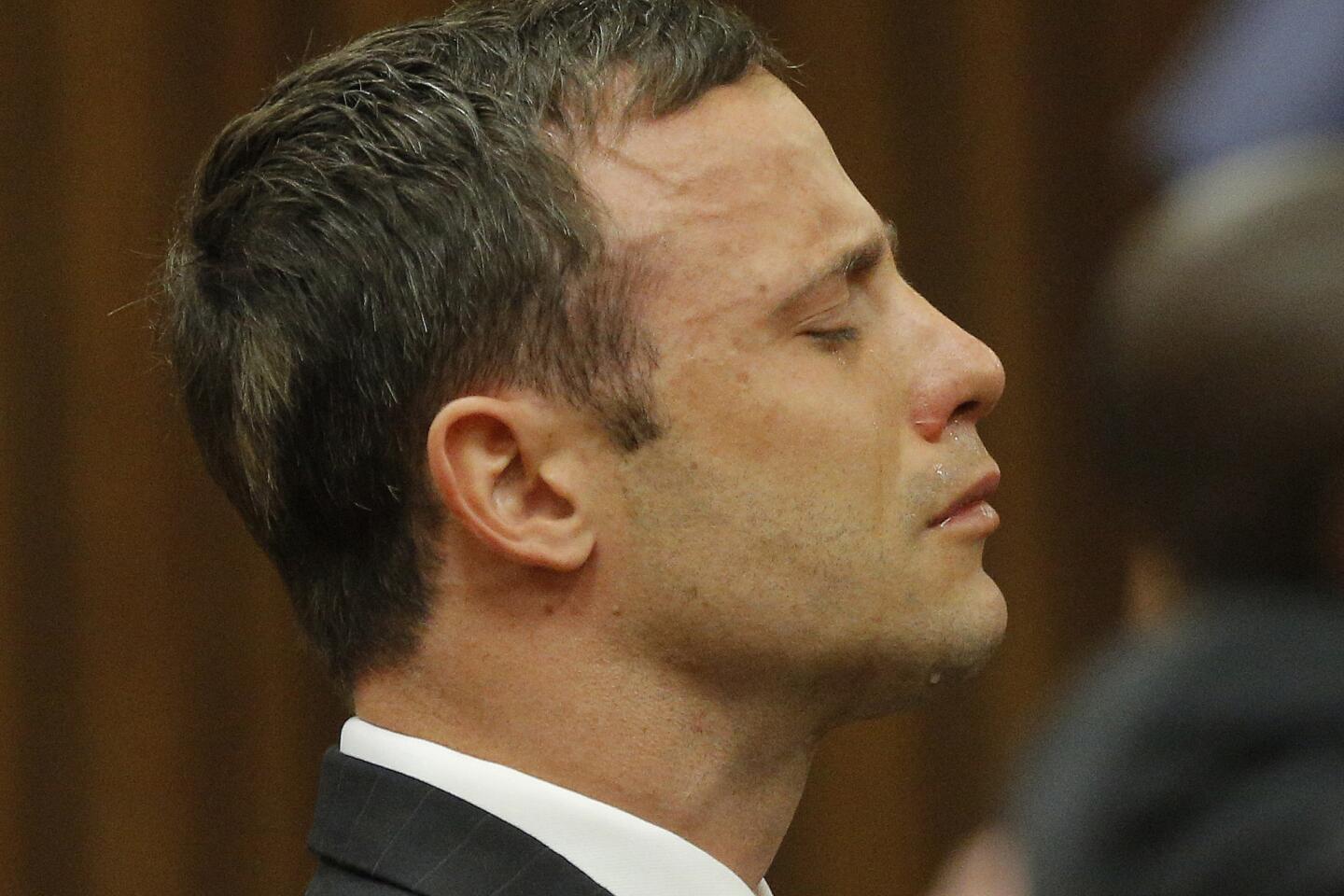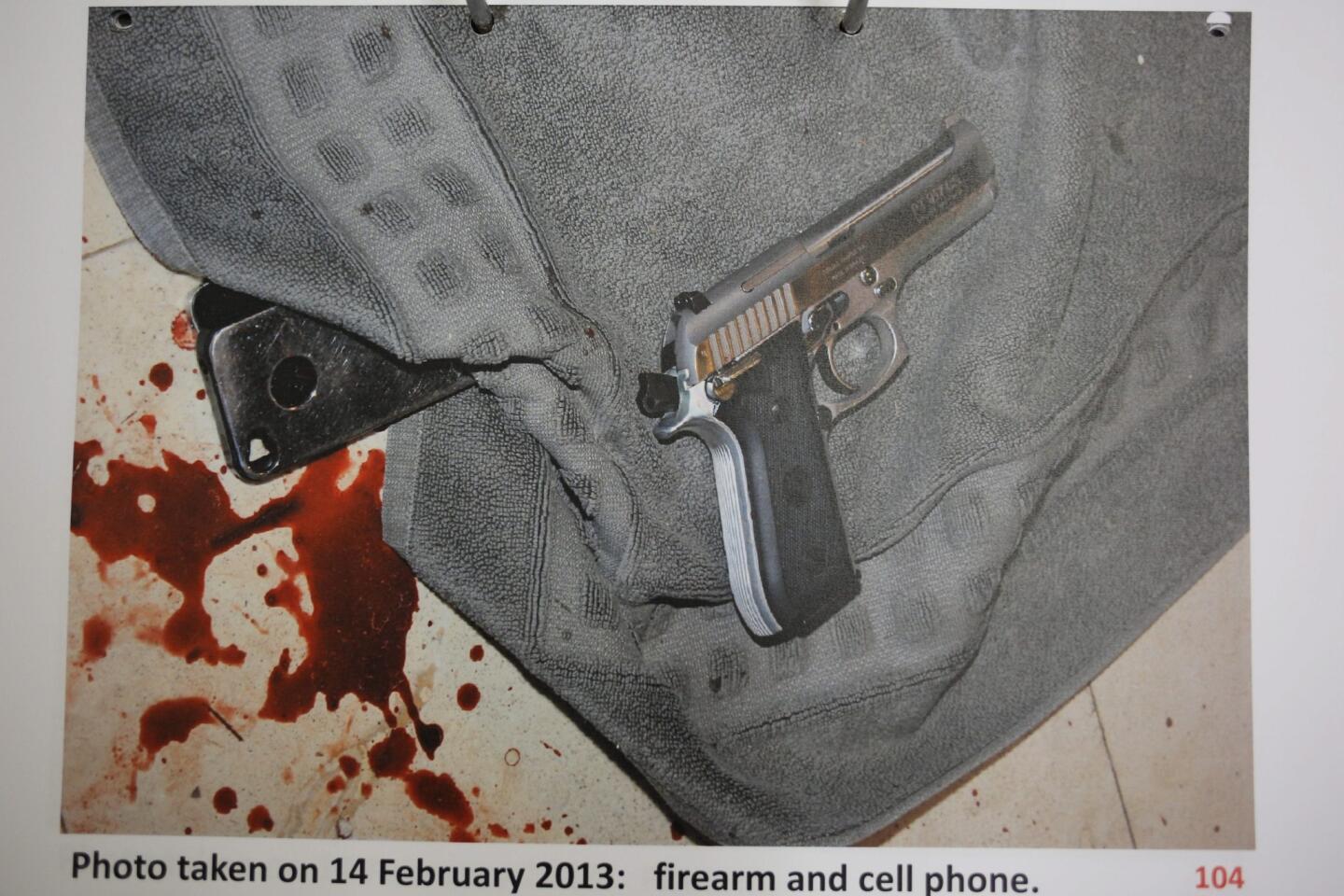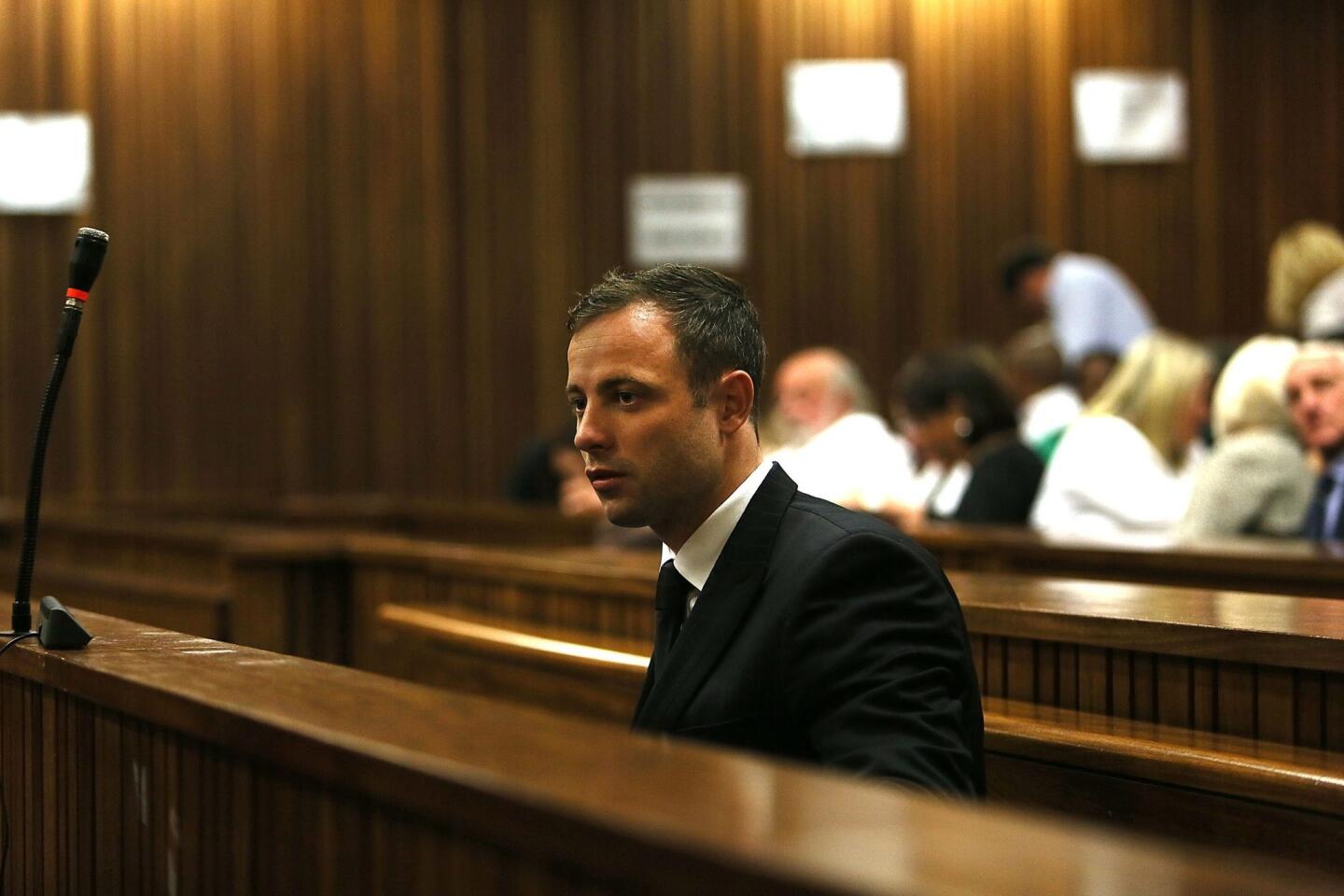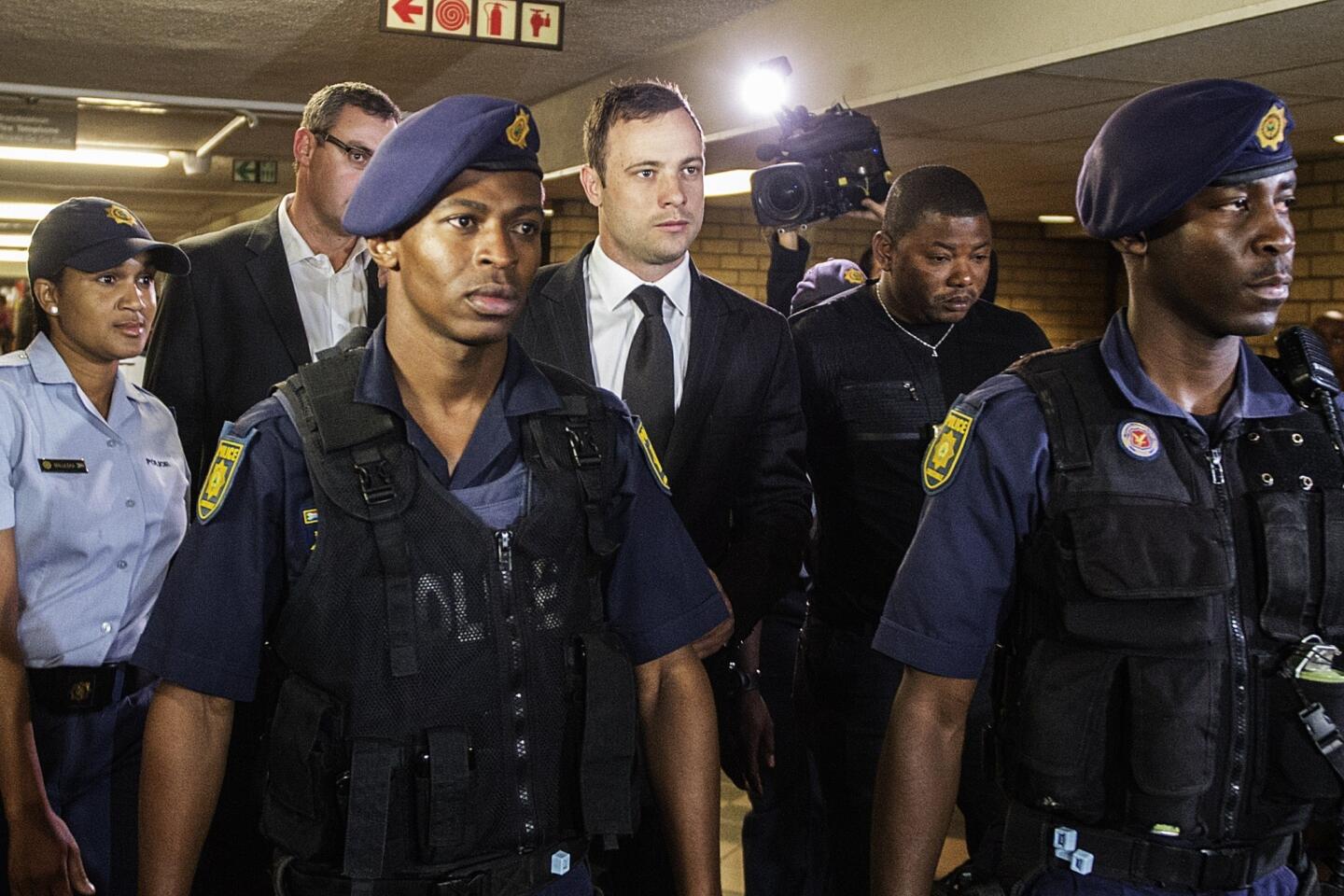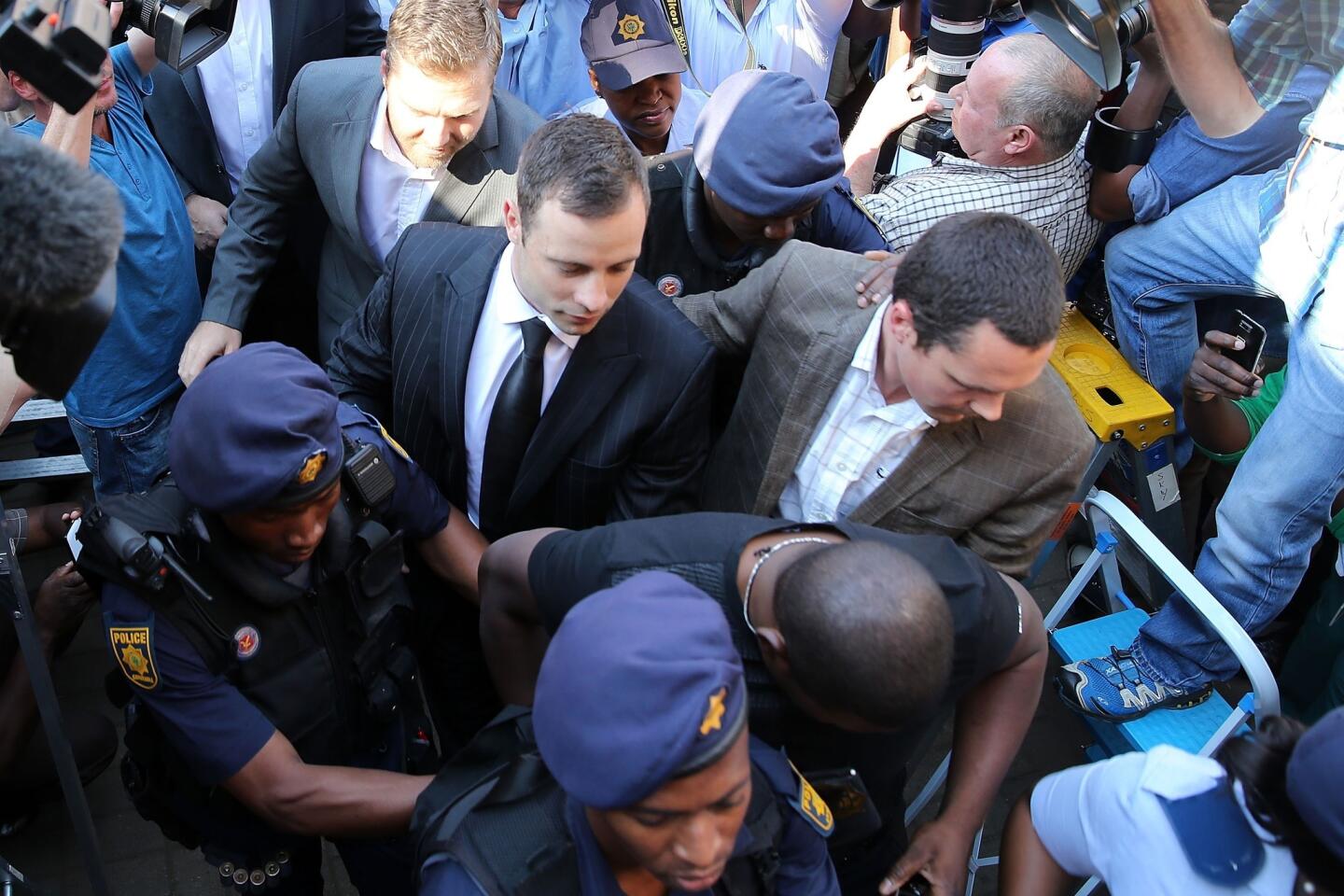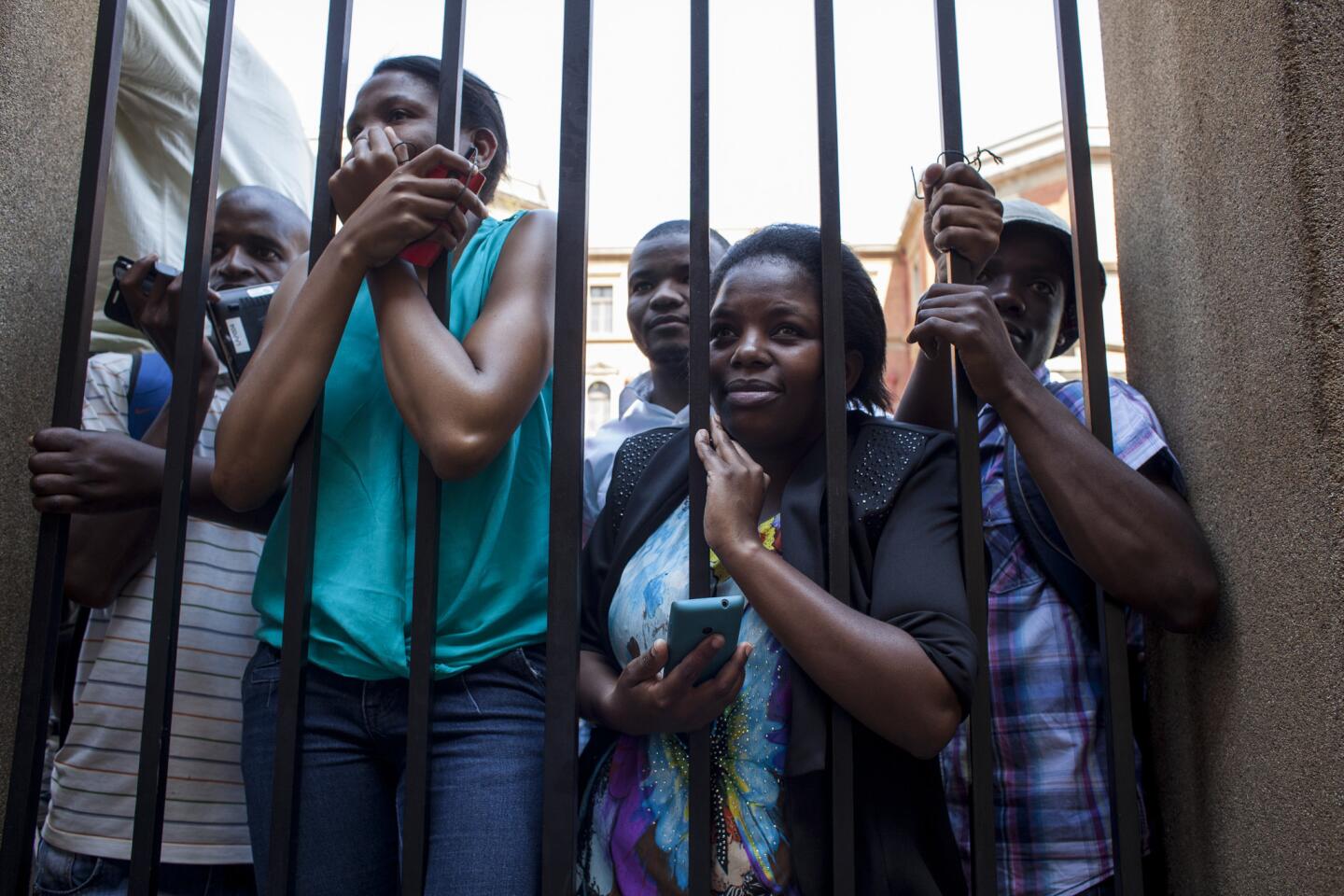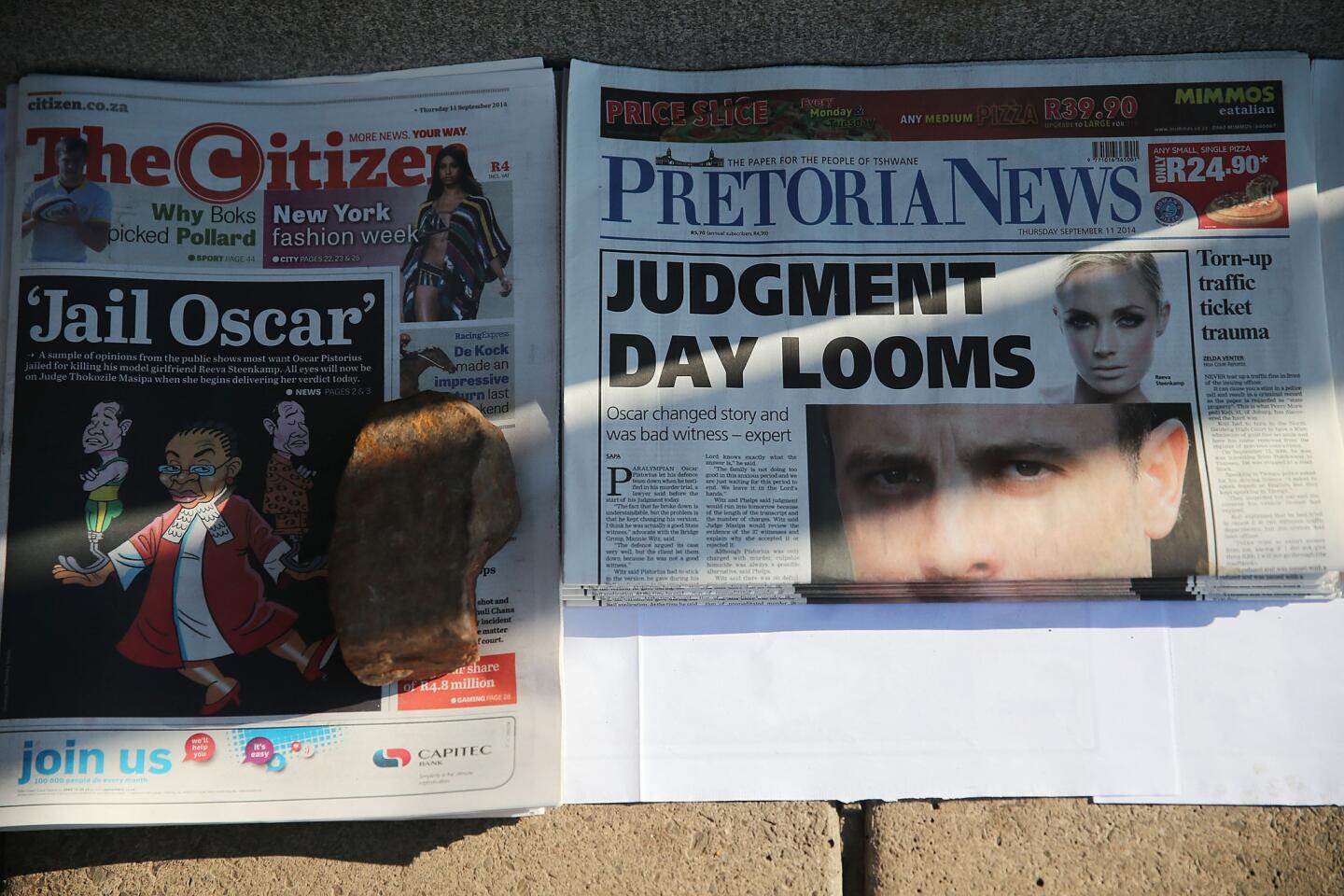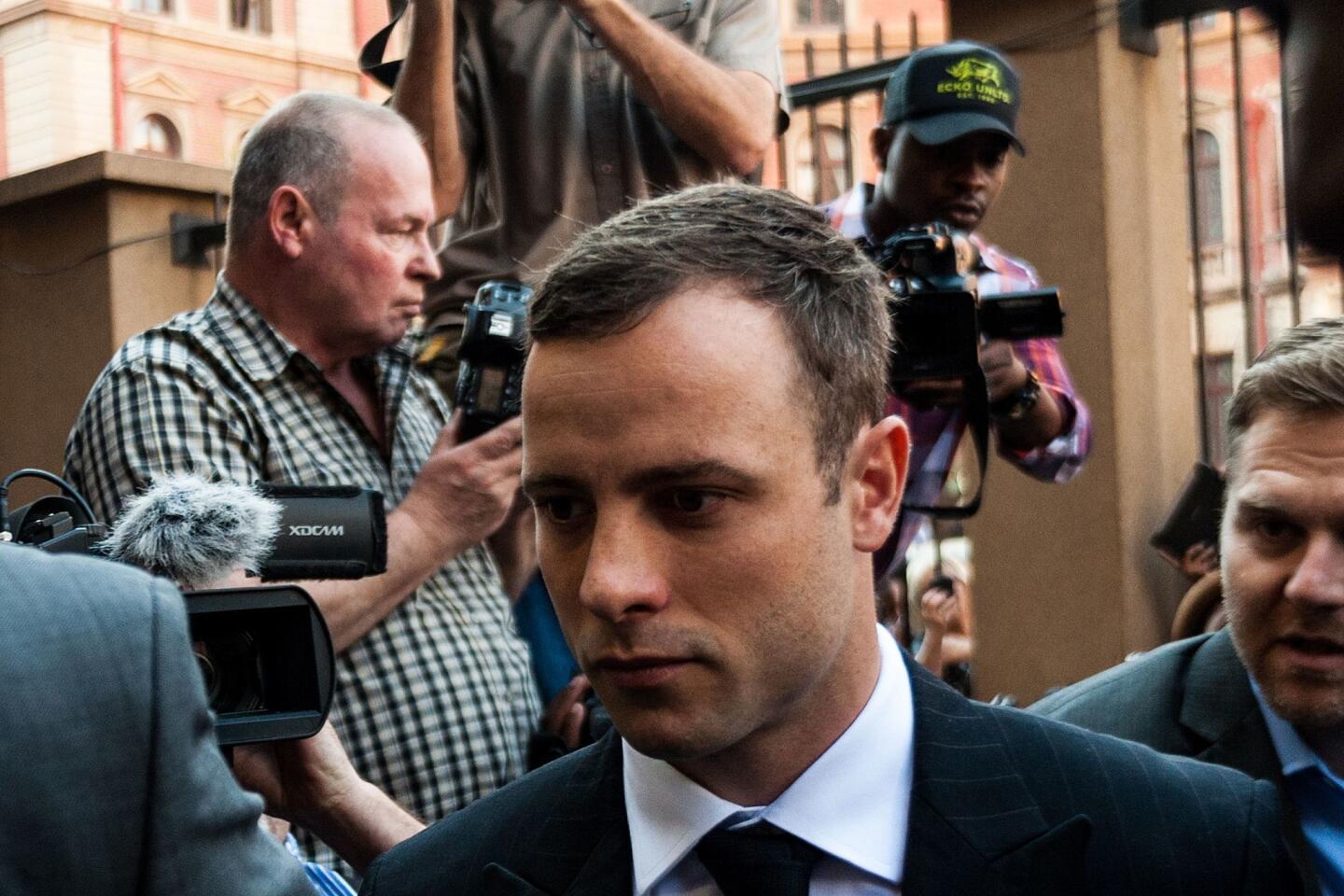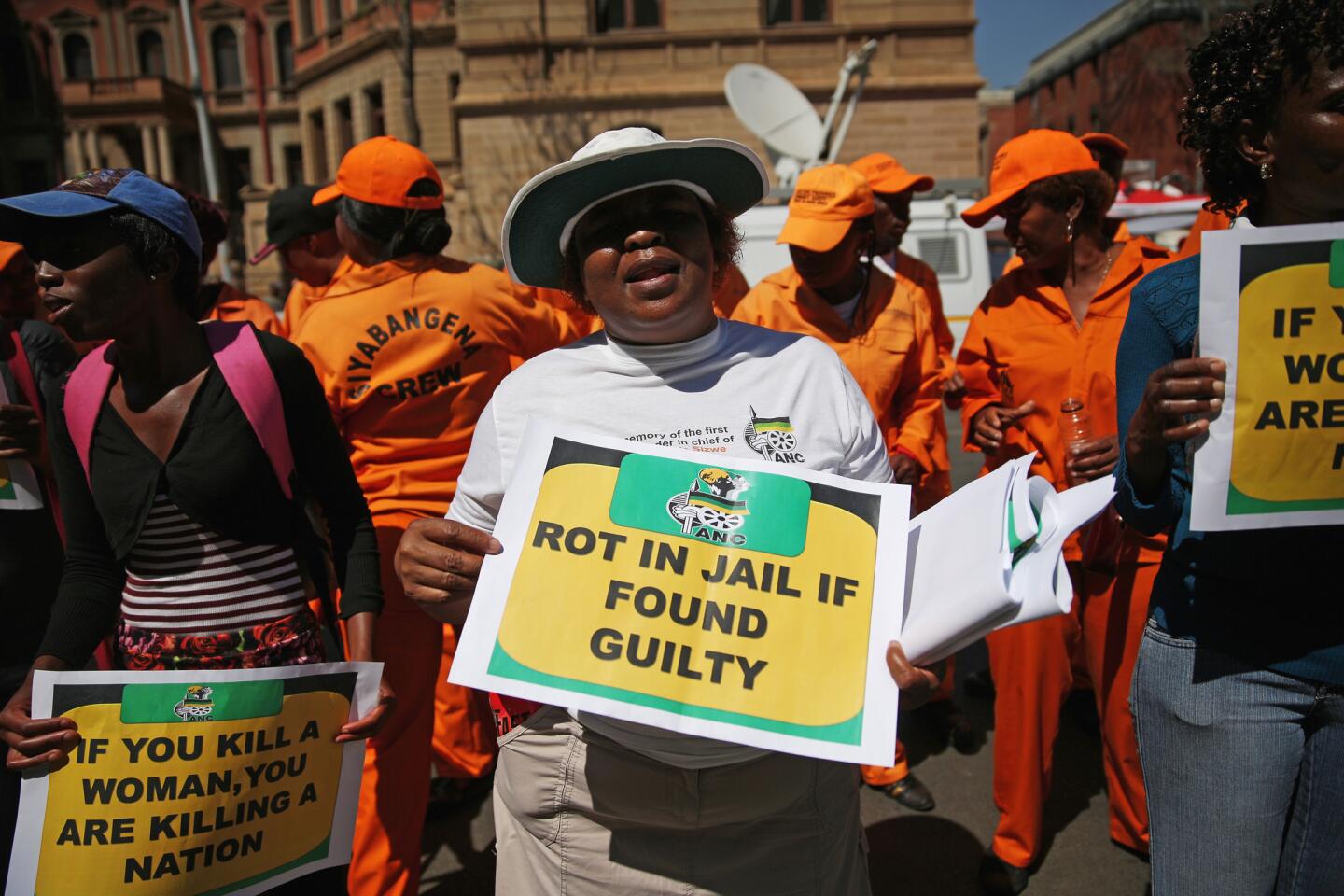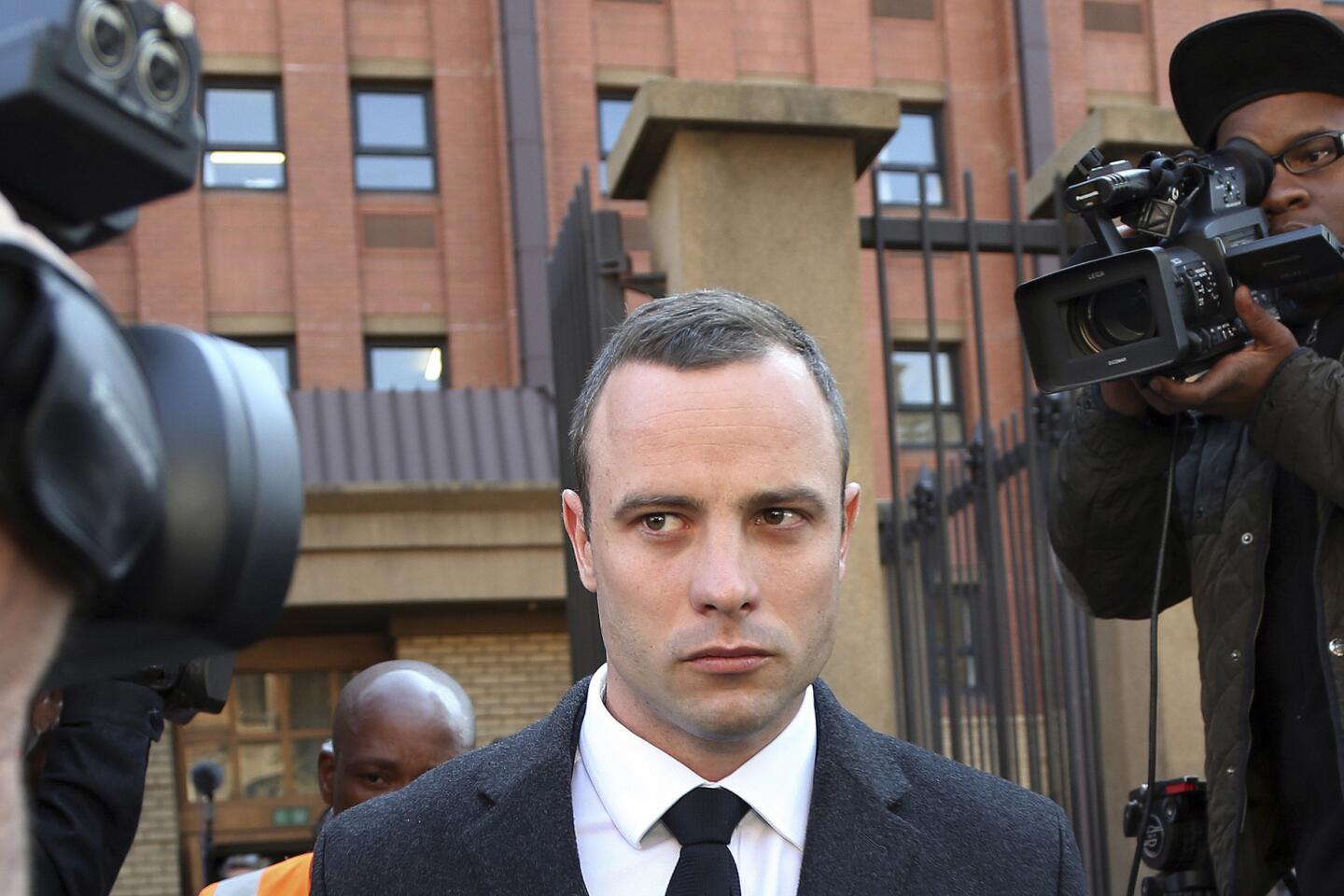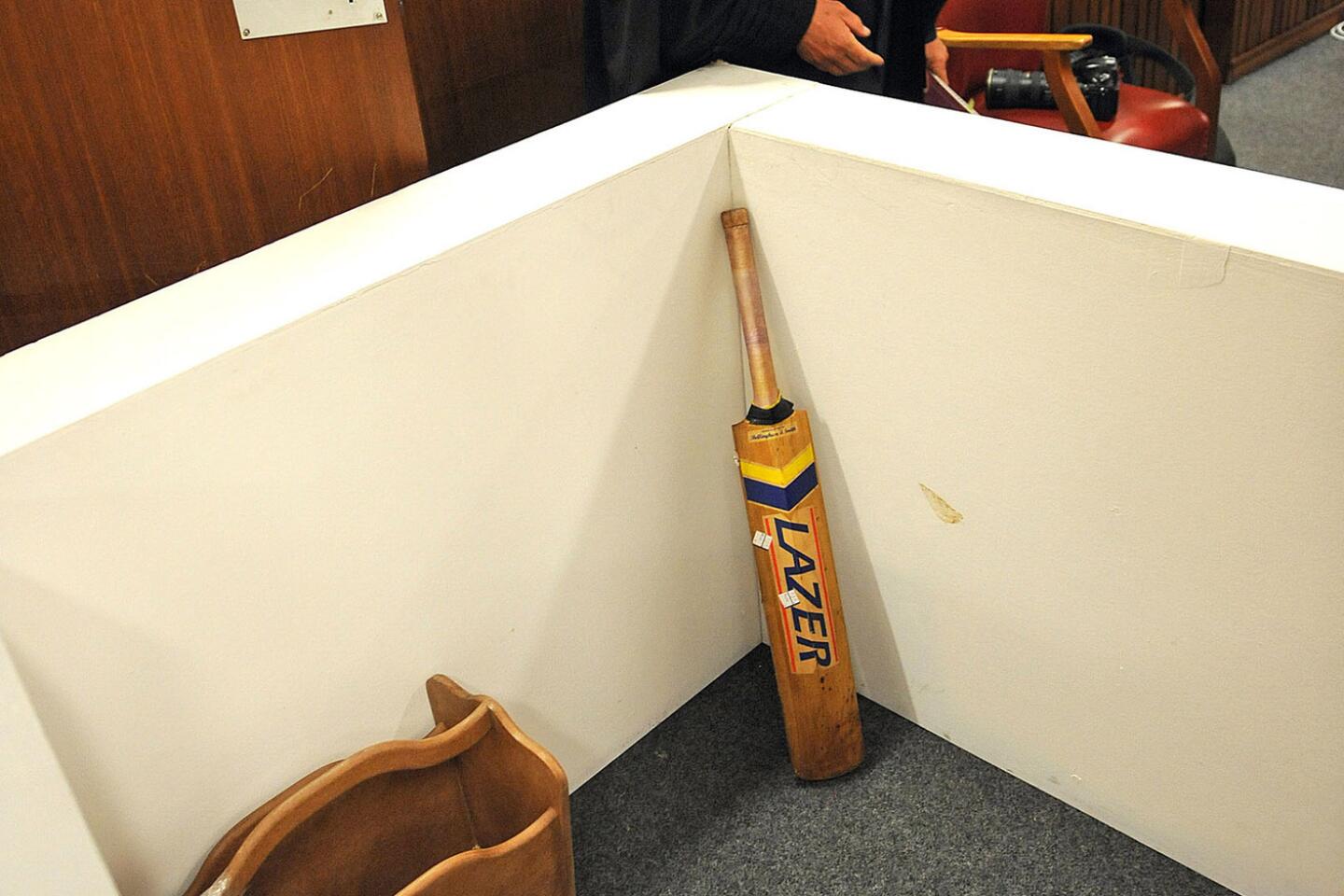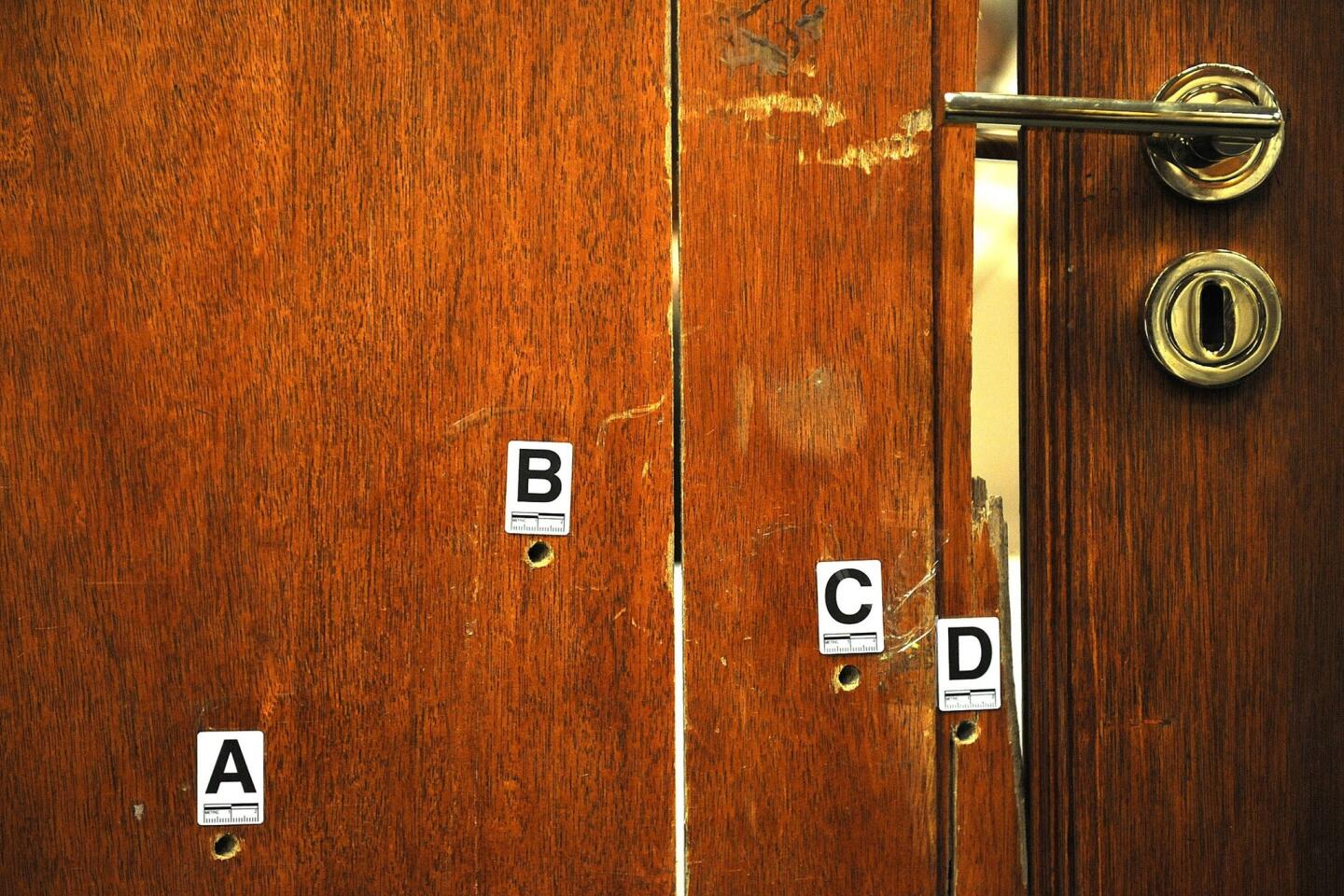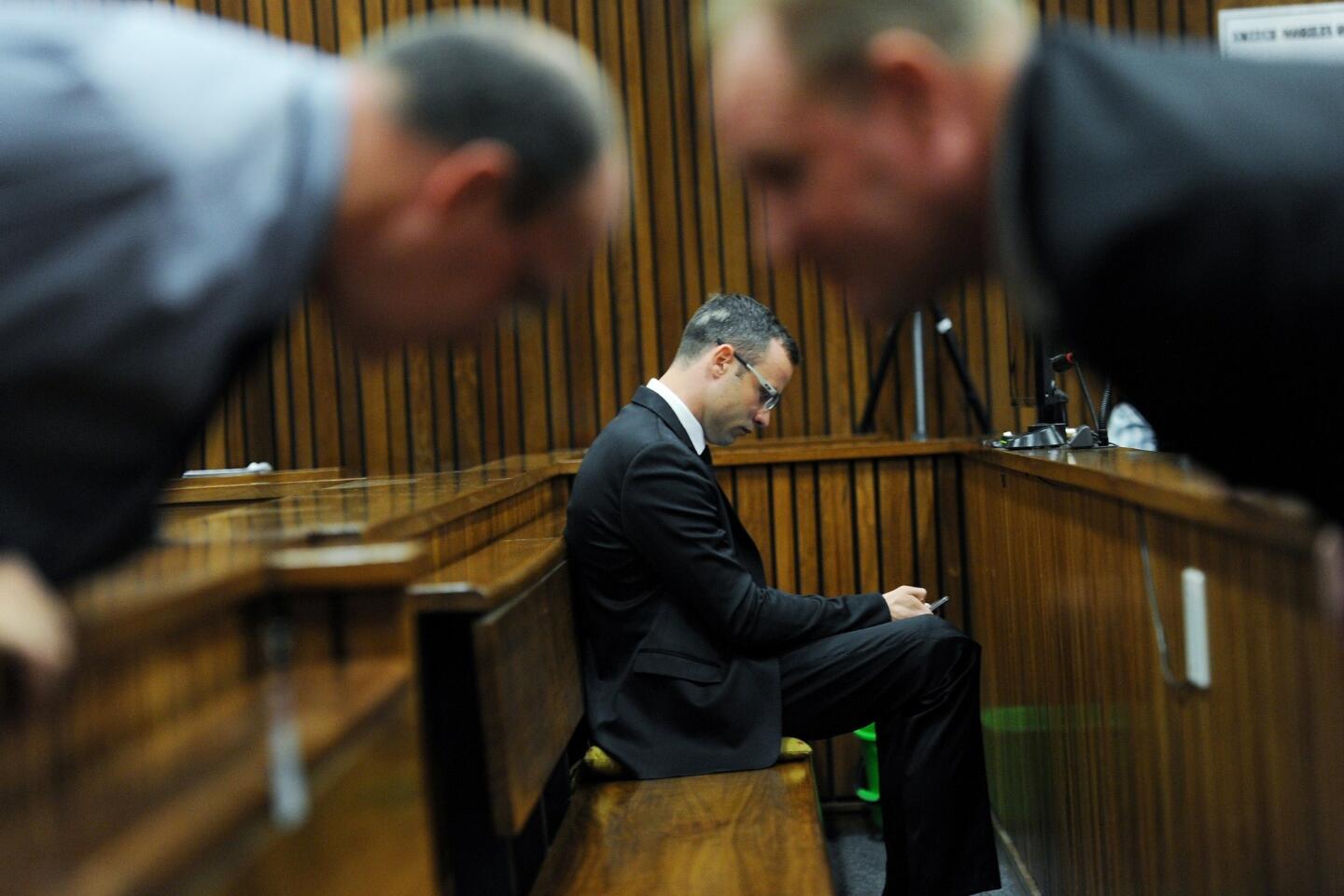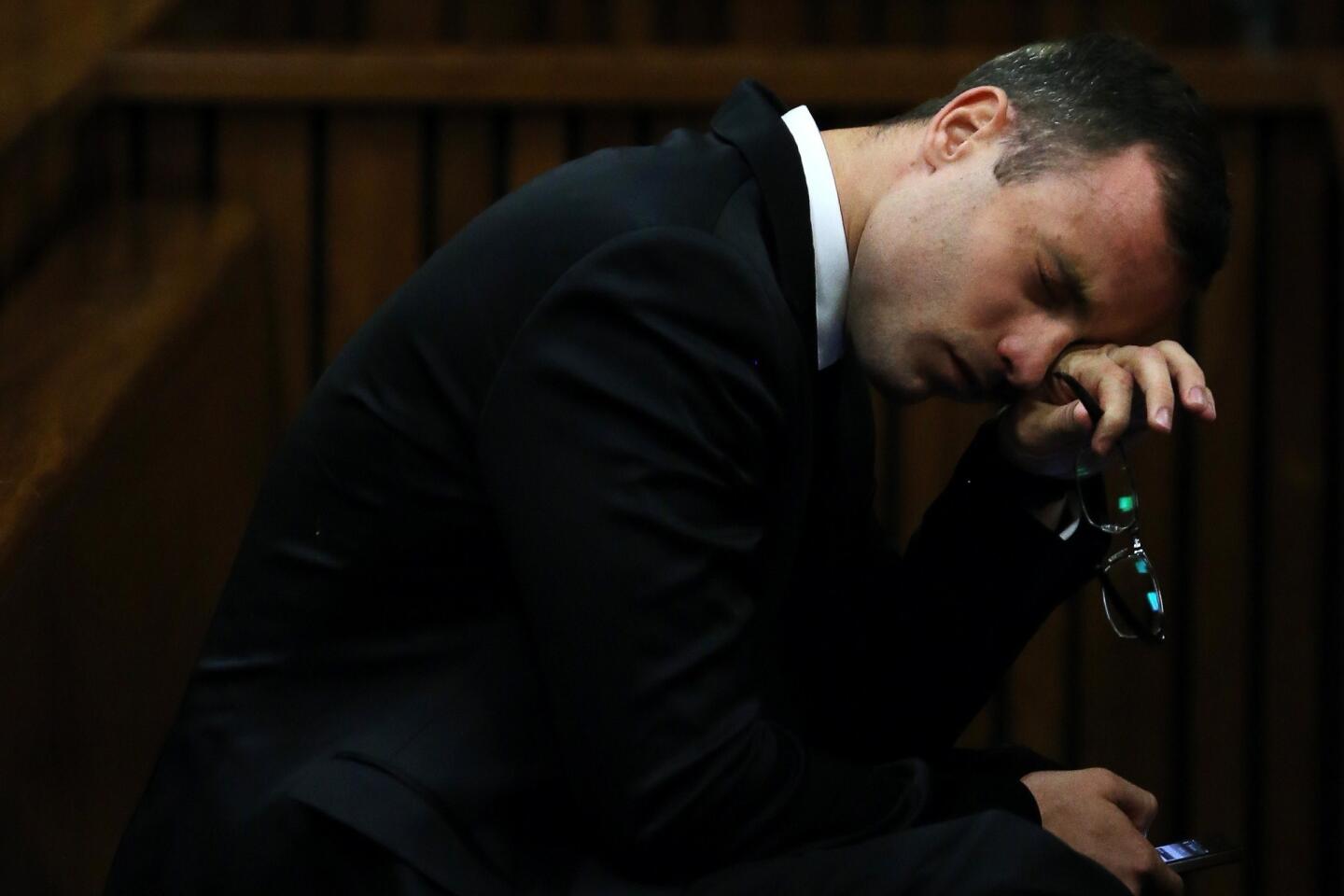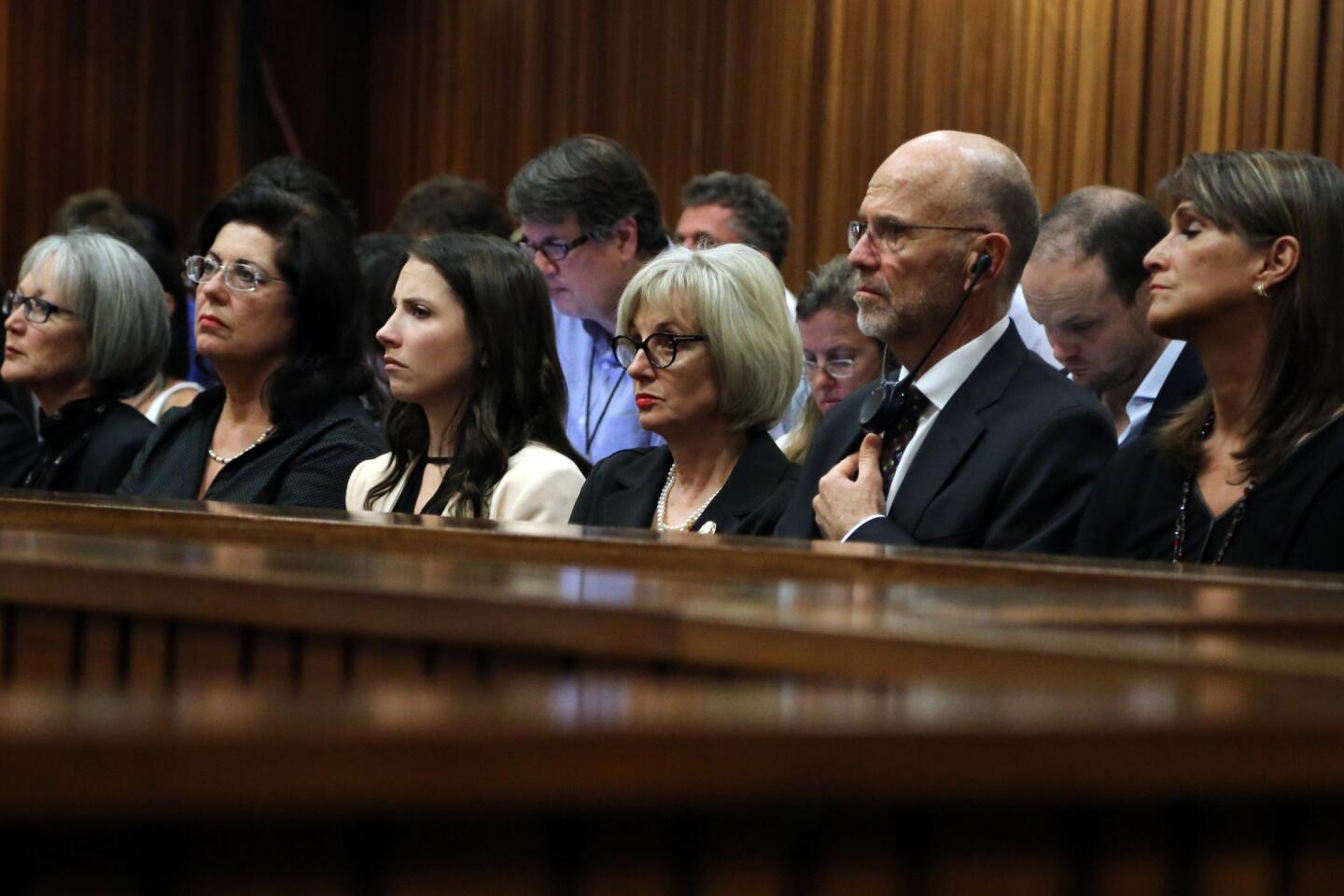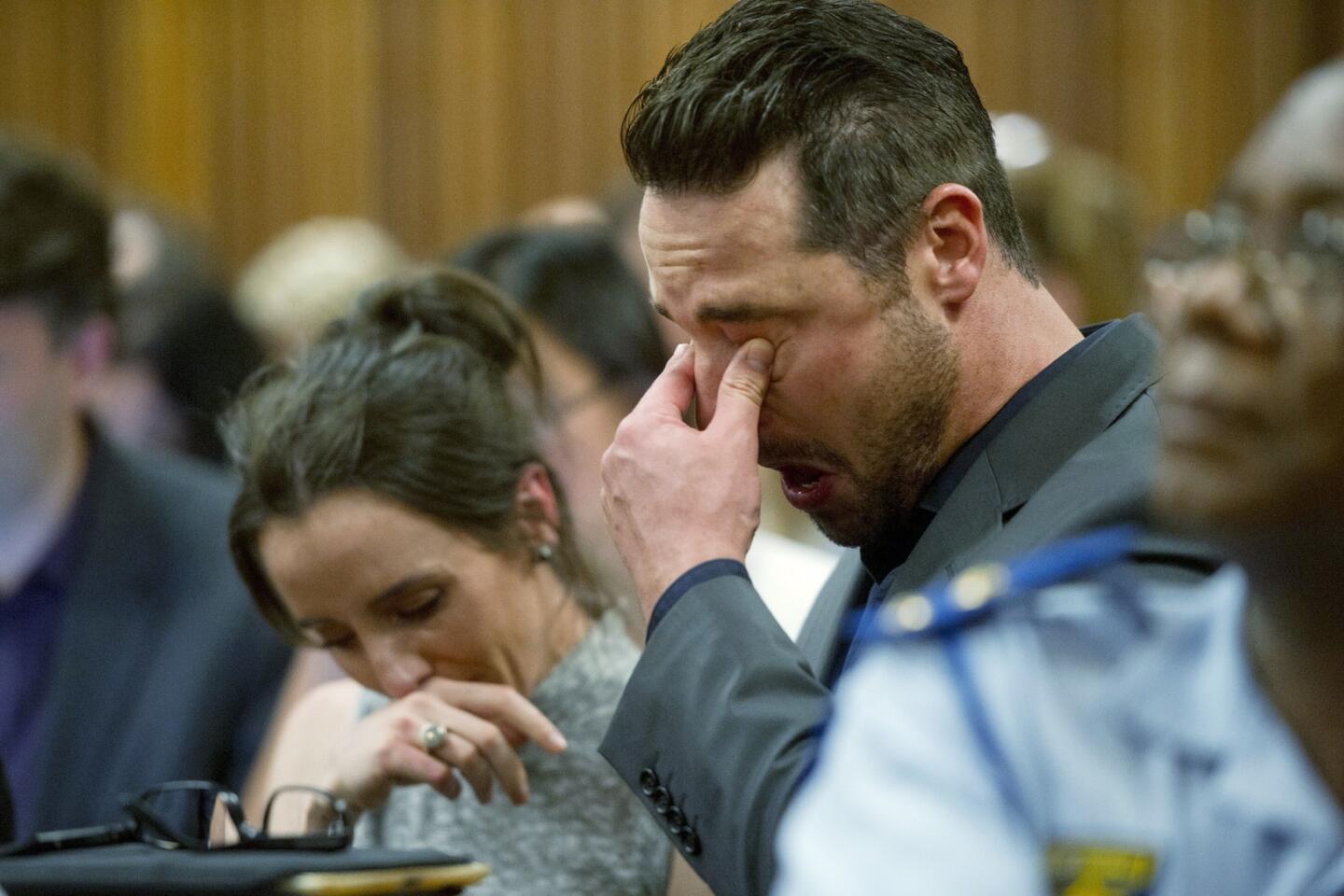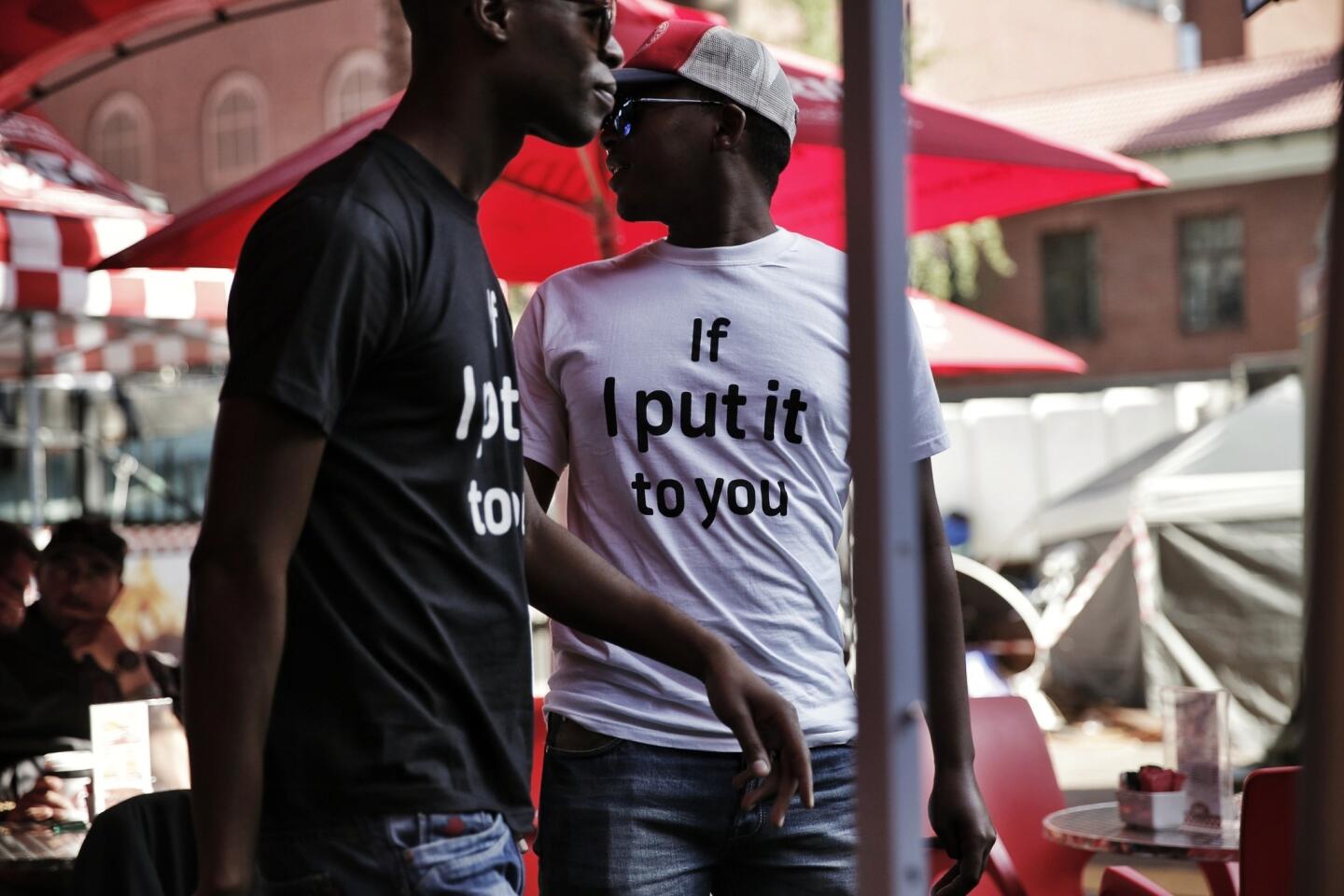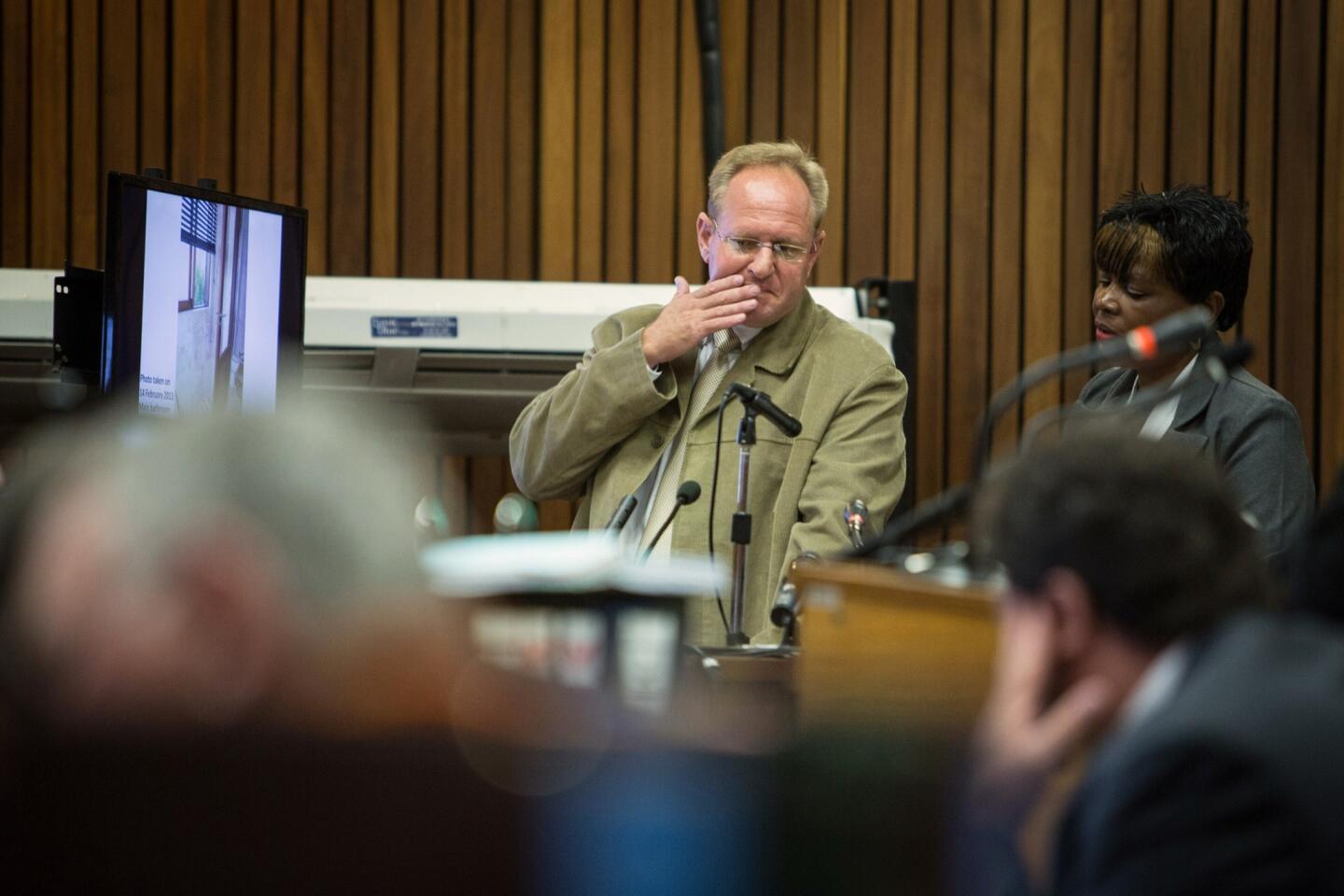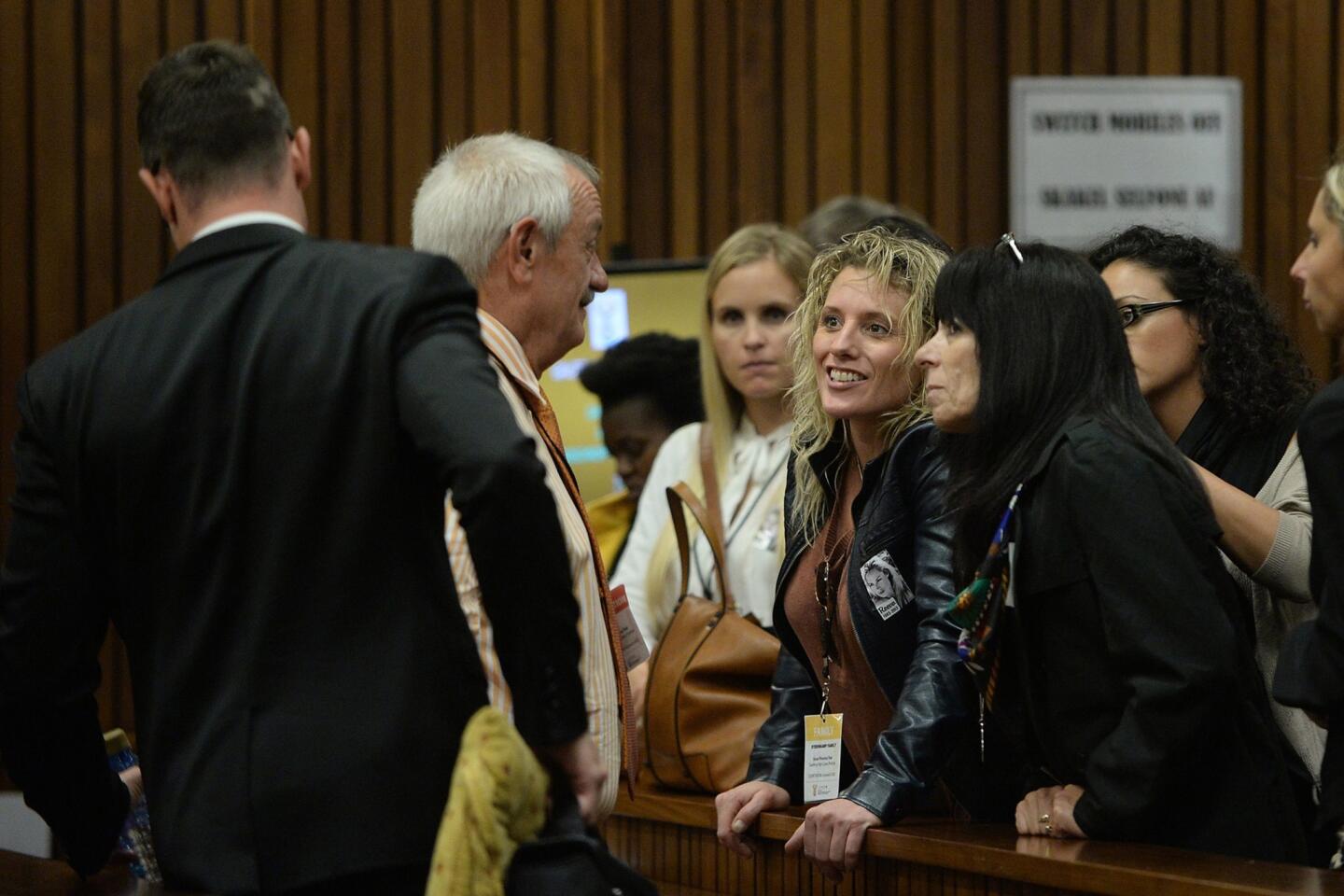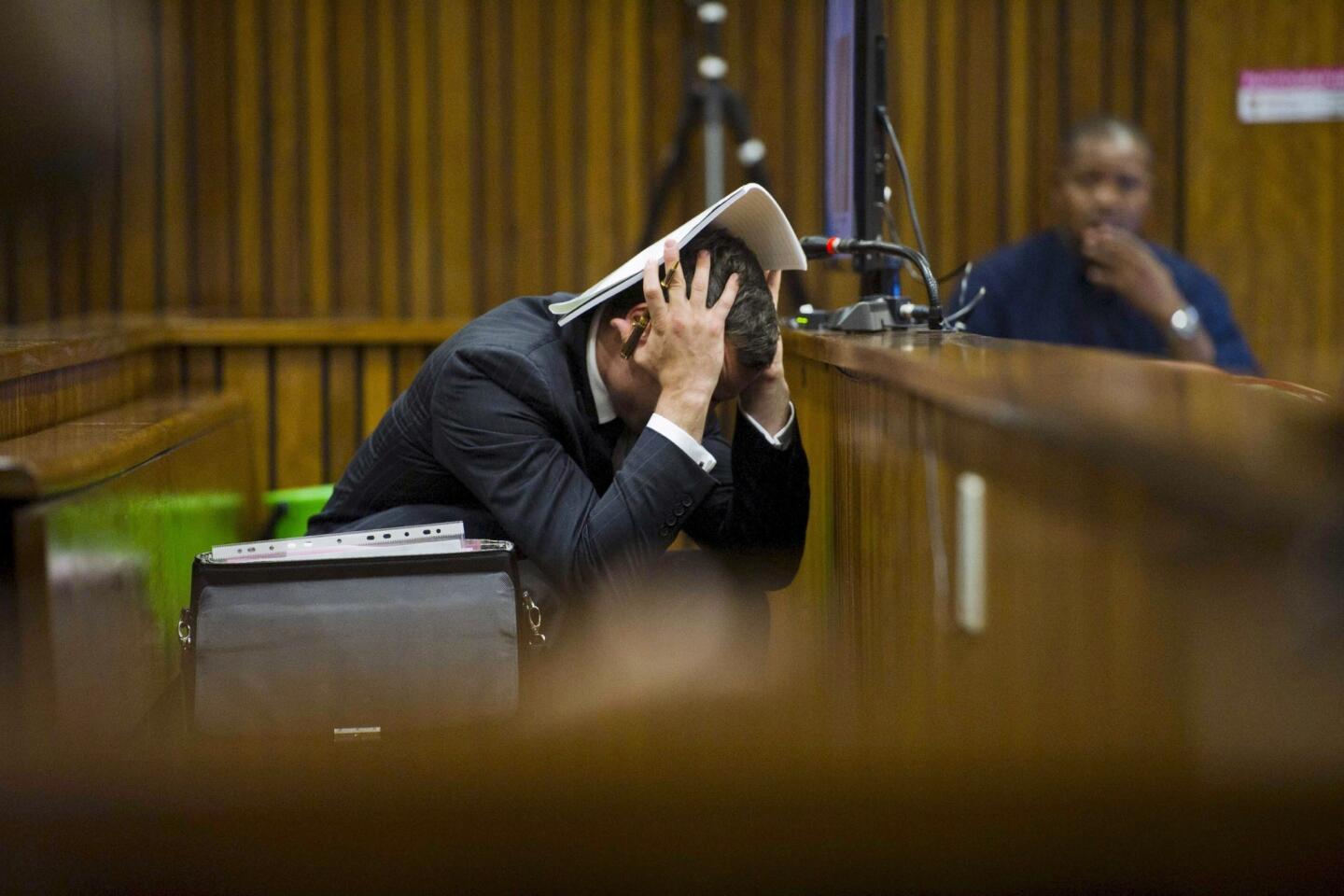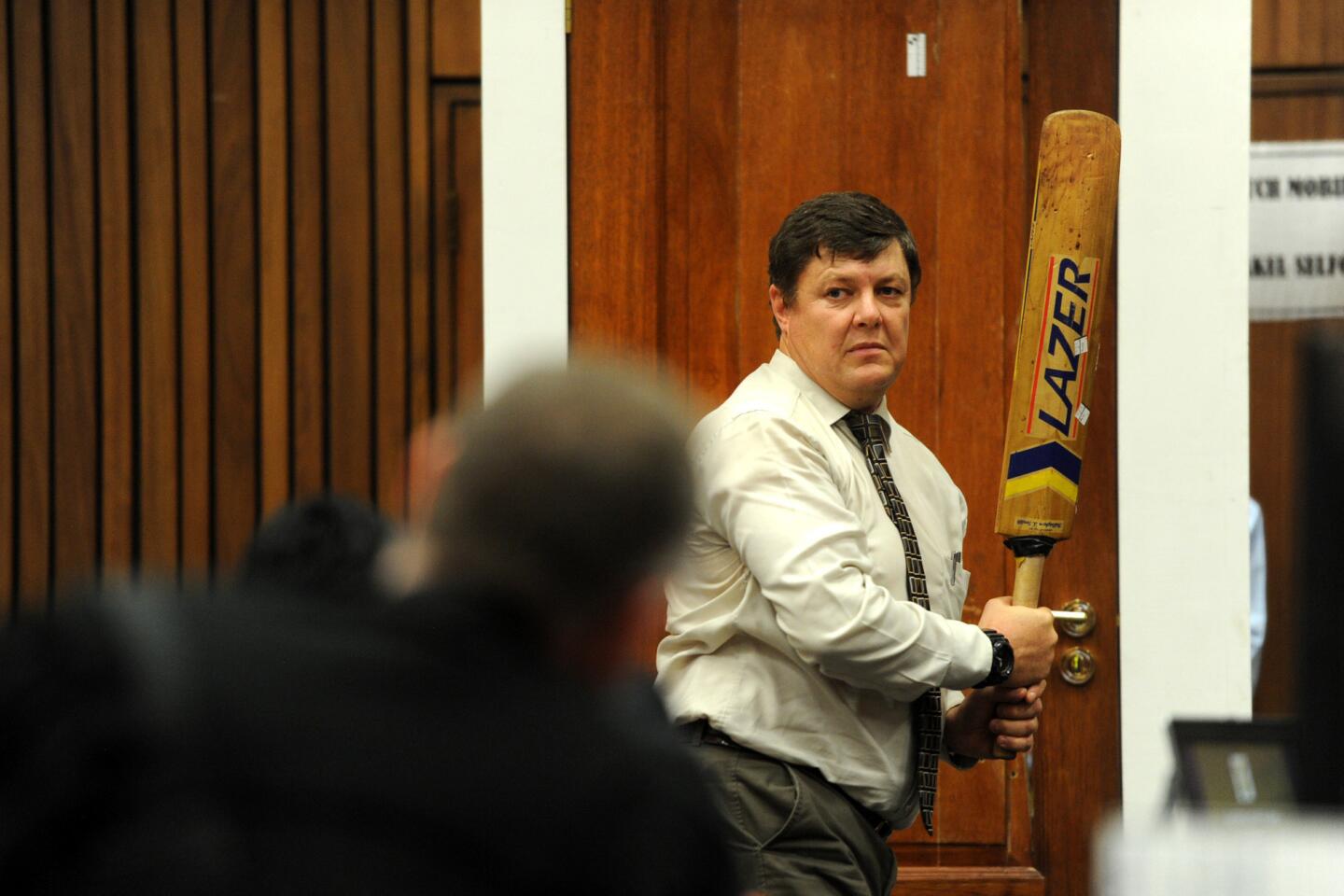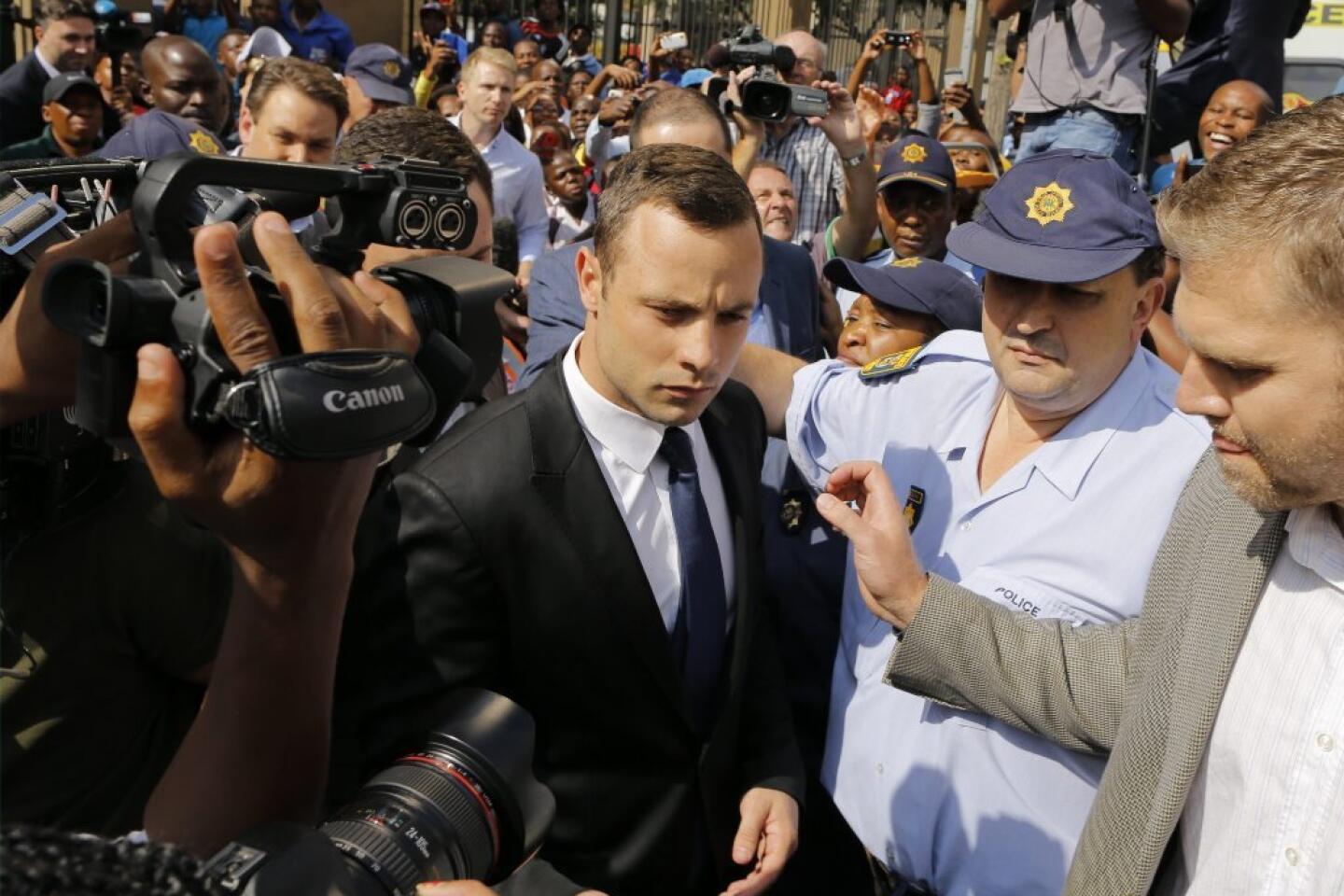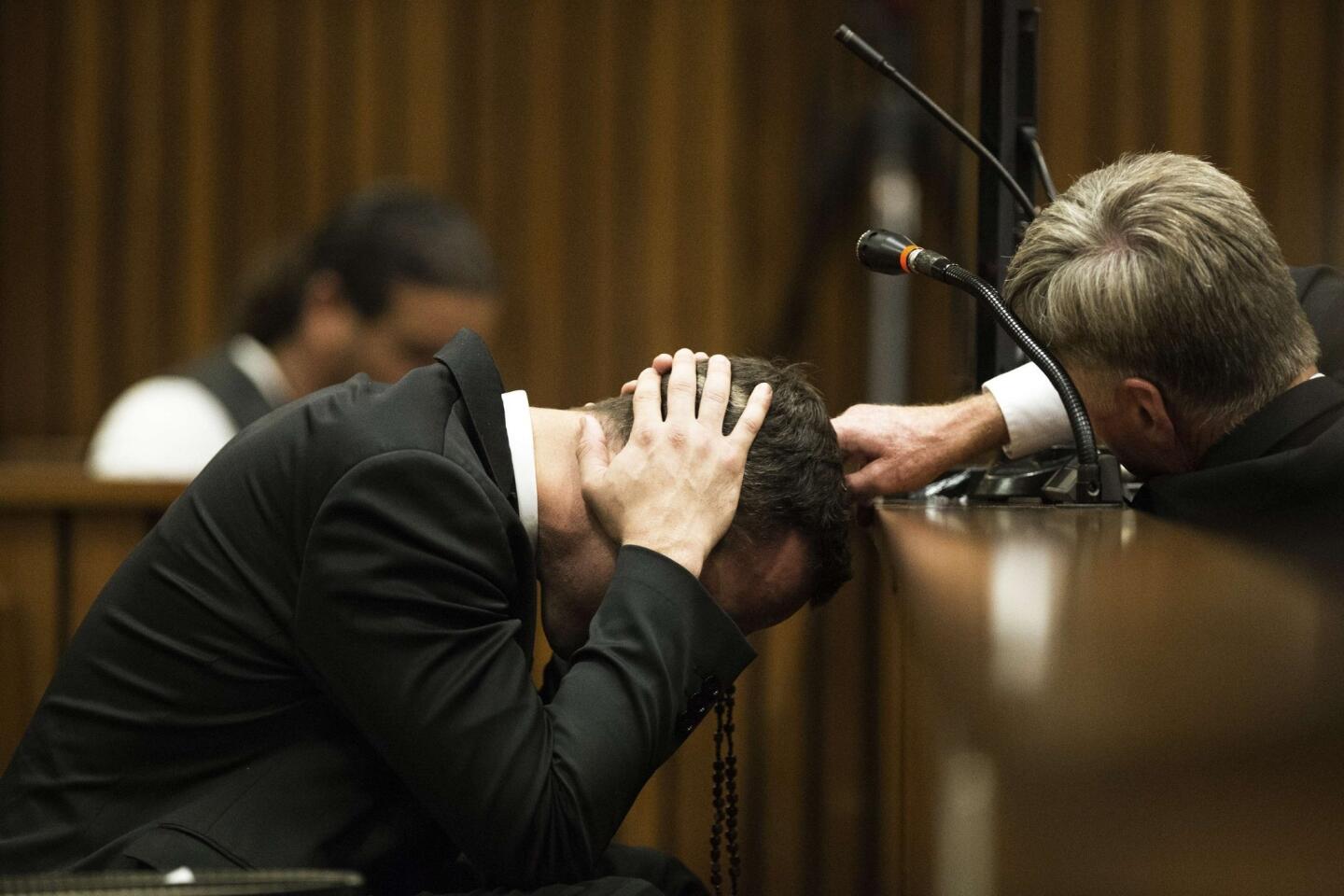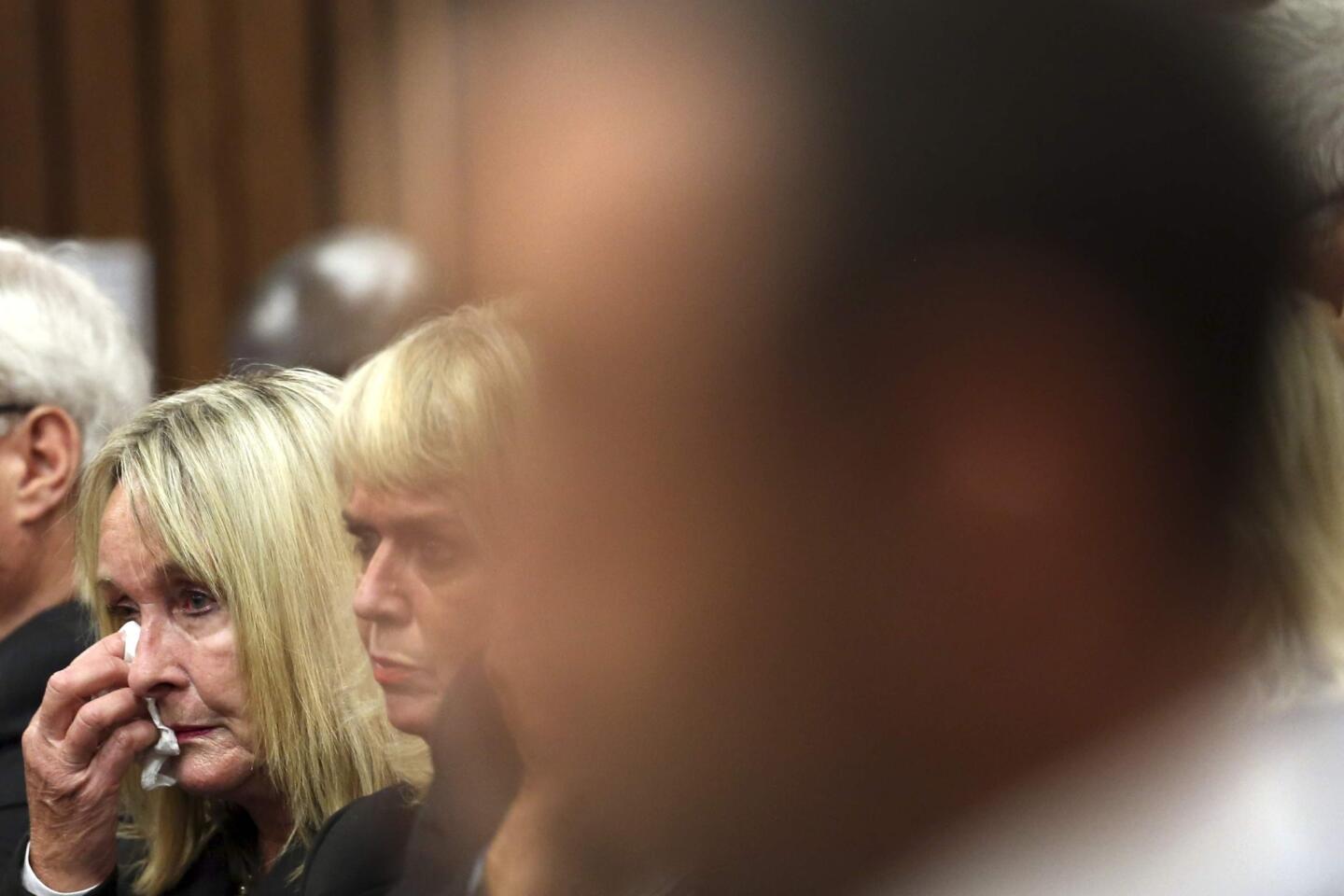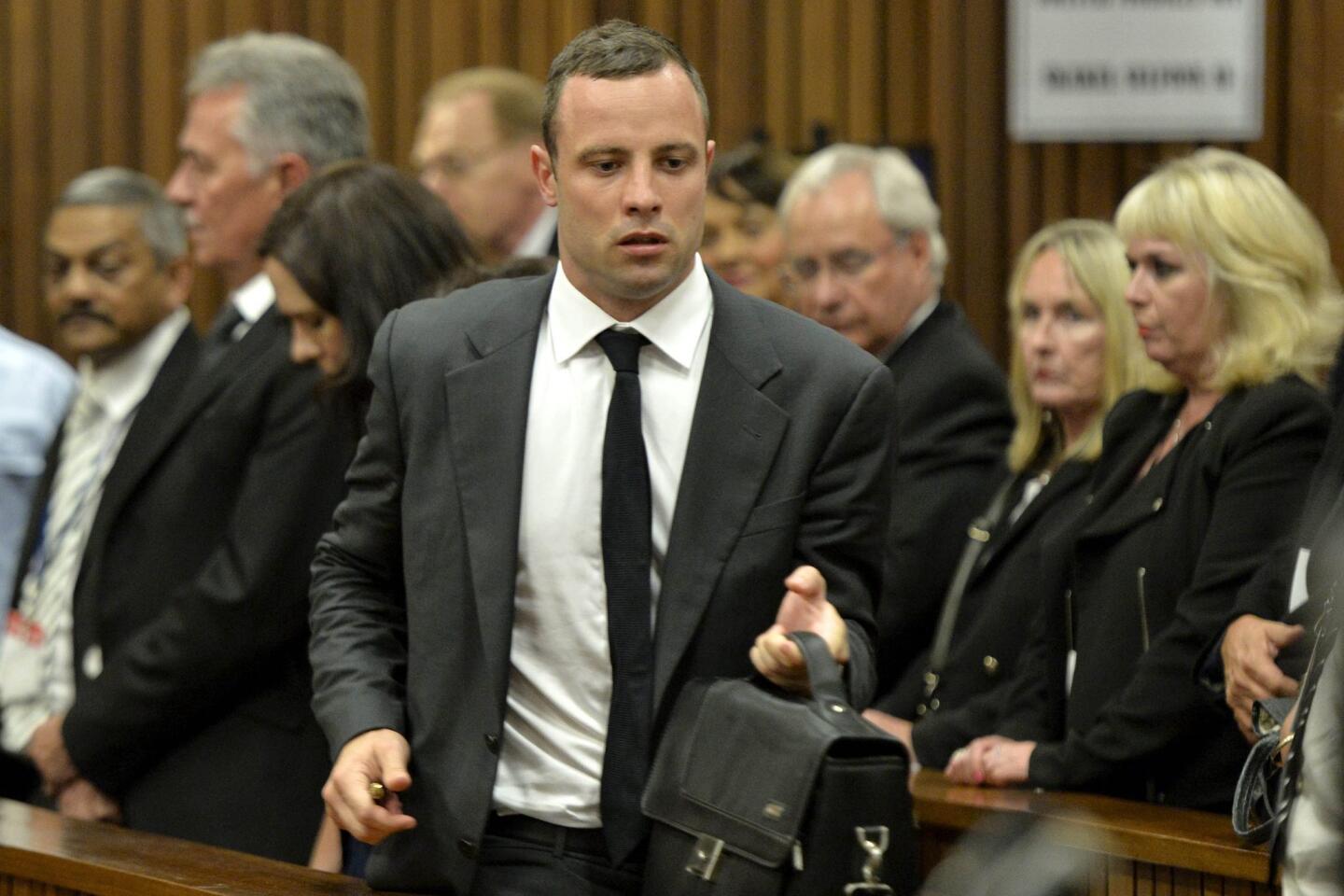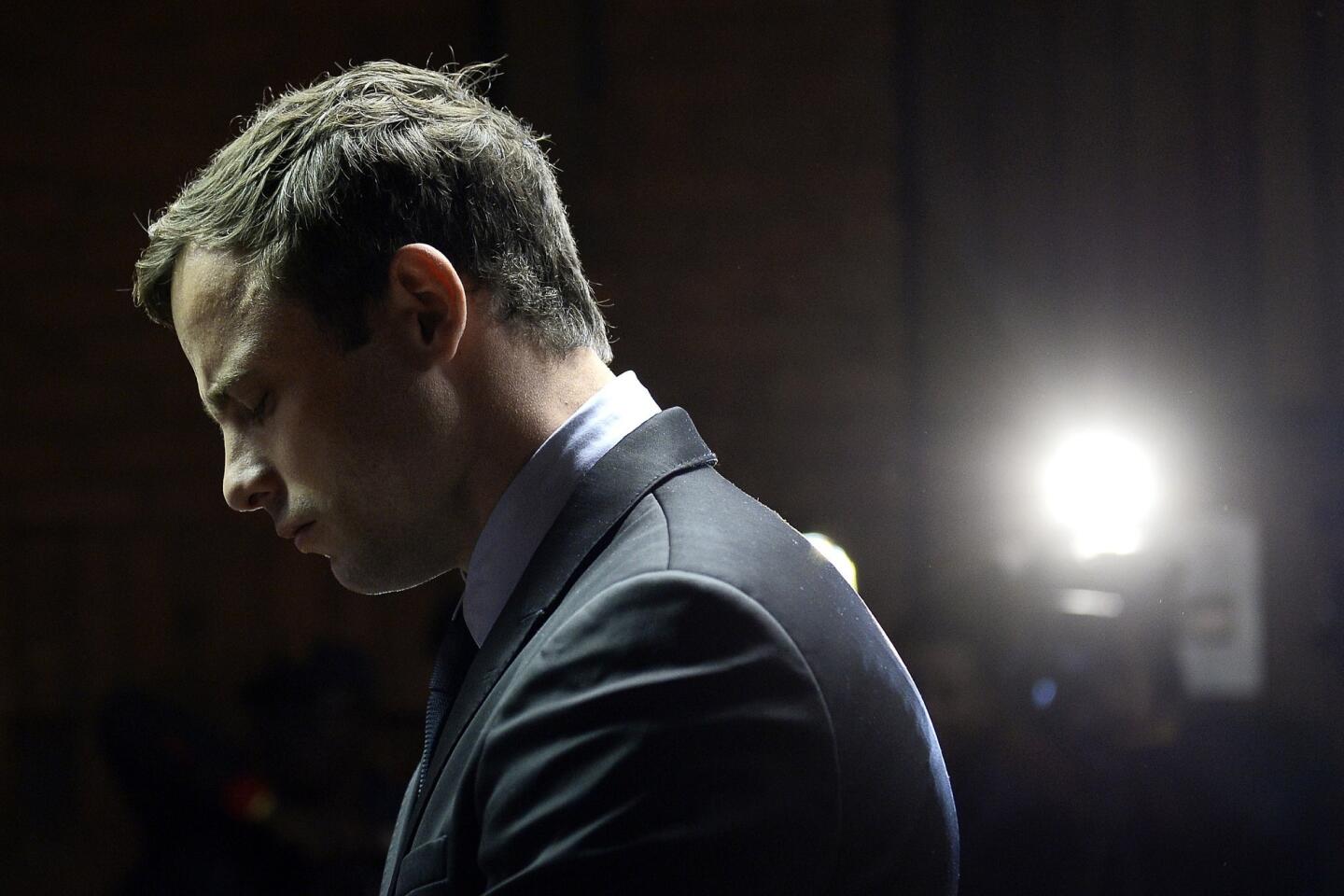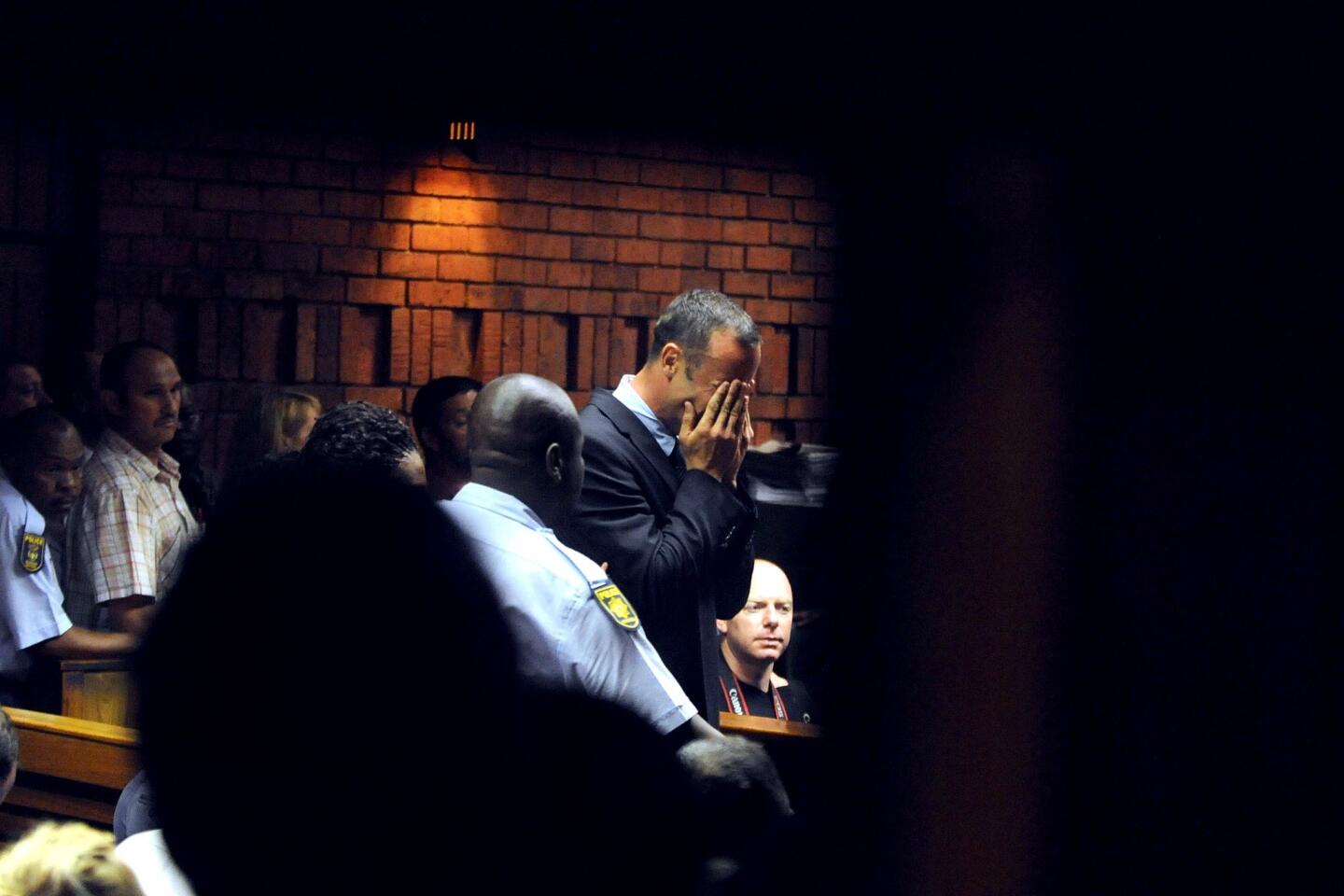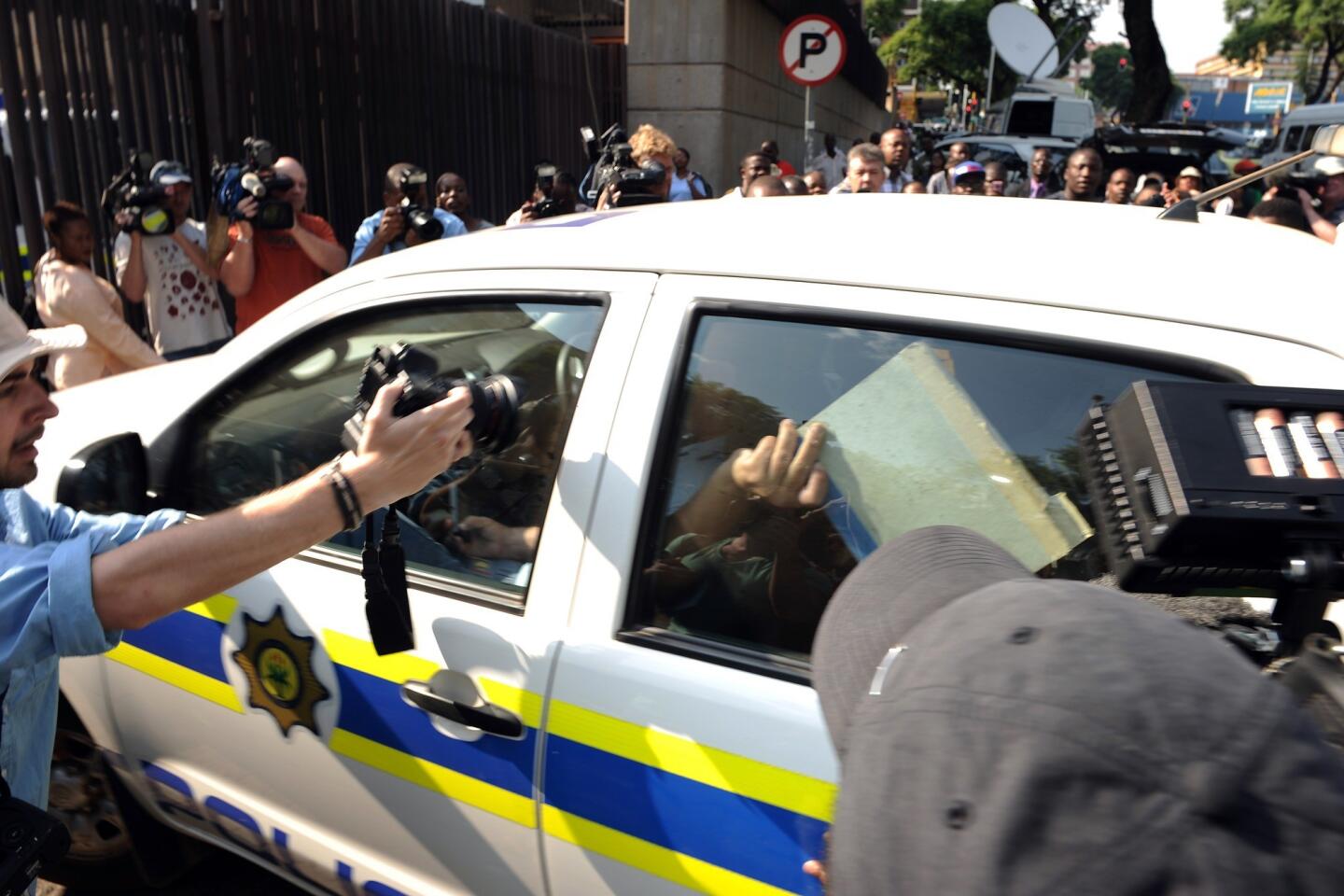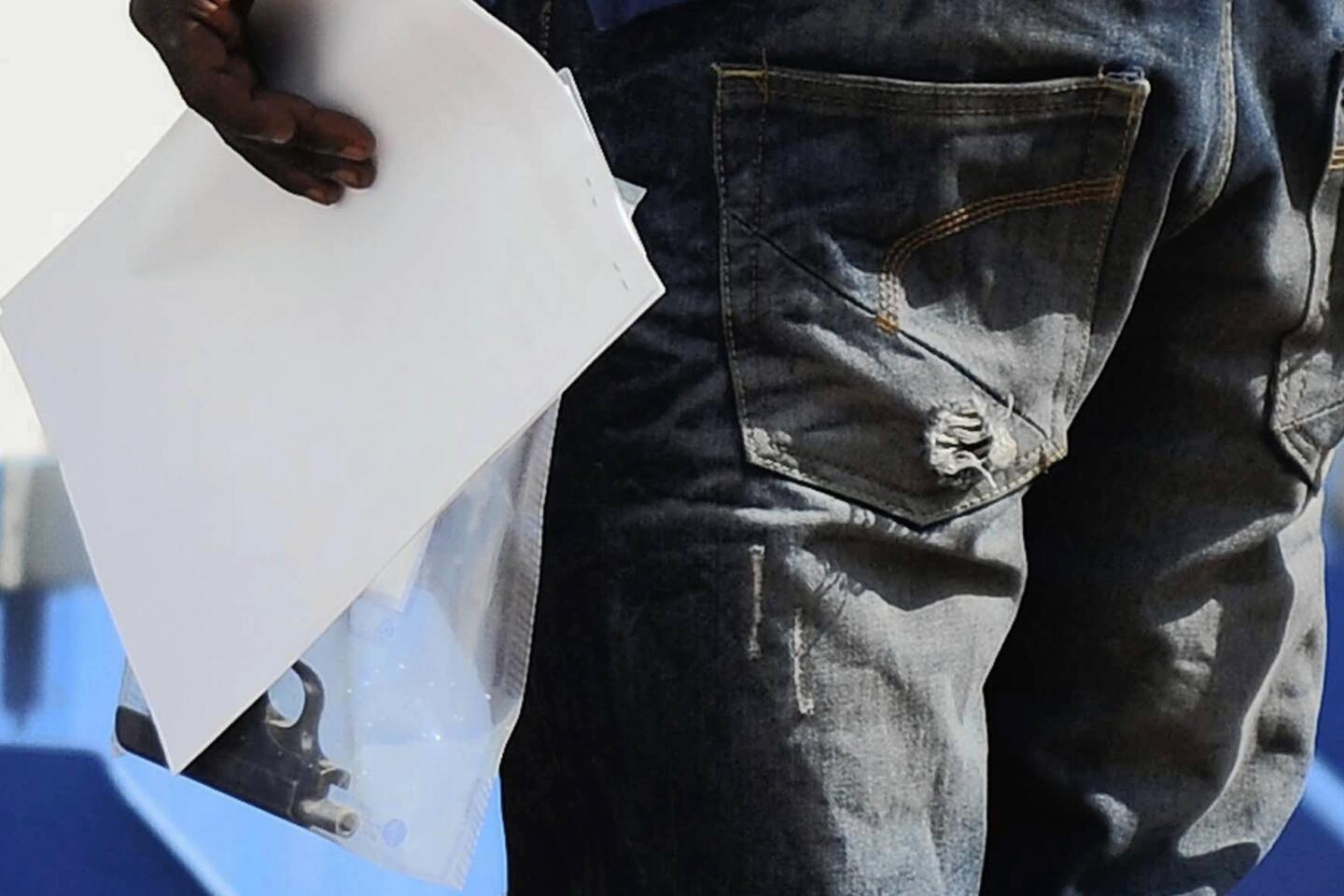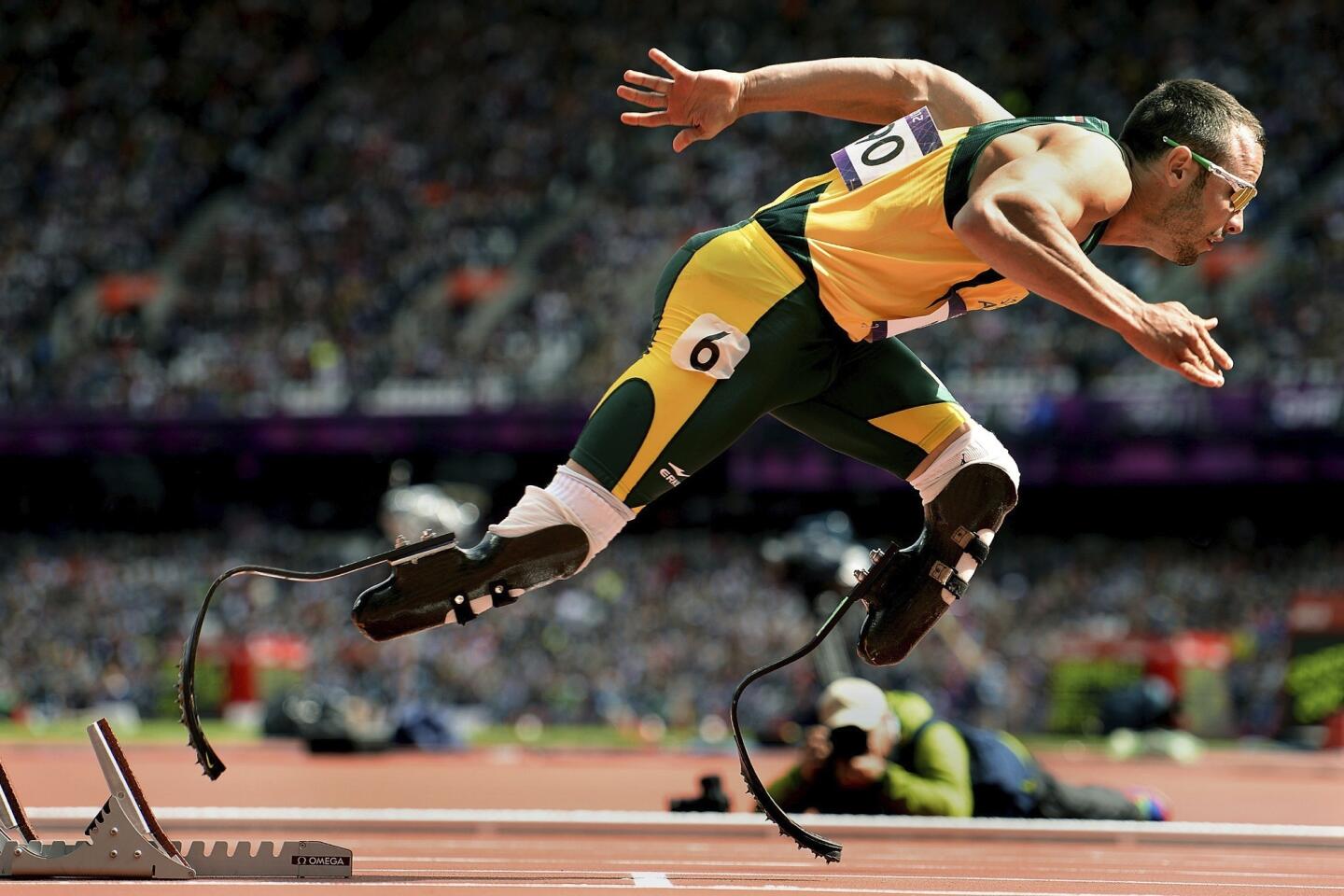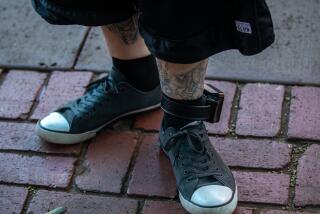Oscar Pistorius trial: Missing watch taints police investigation
JOHANNESBURG, South Africa -- Police investigating the shooting of model and lawyer Reeva Steenkamp by her boyfriend, South African Olympian Oscar Pistorius, had to open another investigation into themselves -- over the disappearance of a valuable watch from the scene when only police were present.
The embarrassing revelation that police apparently stole a watch valued at $5,000 to $10,000, part of Friday’s testimony in Pistorius’ murder trial, came with South African newspapers complaining of police ineptitude.
Former police colonel Schoombie van Rensburg testified that he was “furious” when he realized the watch had disappeared, but he admitted earlier that when he first saw the display box with eight watches in Pistorius’ main bedroom, he felt some trepidation because the watches were clearly expensive.
He said the watches were “tempting to anybody.”
One watch, the court heard, was taken by Pistorius’ sister, who was escorted by police to the room to get clothing for her brother, because he had no shirt on. But a second watch disappeared when only the police forensic team and photographer were at the death scene.
Van Rensburg said he ordered a body search of all police personnel at the scene, as well as their bags. The entire house was searched as well, he said.
“We even searched the vehicles of every expert at the scene,” he said. Nothing was found, and the case remains unsolved.
The admission that police apparently stole evidence appears to offer defense lawyer Barry Roux an opportunity to cast doubt on the integrity of the handling of the crime scene after the shooting took place, but it wasn’t the only testimony damaging to the police.
Van Rensburg told the court that on the night of the shooting investigation, he was speaking on his cellphone in the bathroom where Pistorius fired the shots when a police ballistics expert picked up the athlete’s cocked gun and removed the magazine without wearing police gloves.
“I stopped talking and said, ‘What are you doing’ He said, ‘Sorry’ and put the magazine back into the firearm,” Van Rensburg said. “Immediately, I was very angry,” he said.
Though incident does indicate sloppy police work, it doesn’t appear to figure in the competing versions of events by the prosecution and defense. Both sides agree that it was Pistorius who used the pistol to shoot Steenkamp.
A police photograph of Pistorius taken by police shortly after the killing showed him shirtless, with his shorts and prosthetic legs drenched in blood from the waist down.
The muscled athlete, standing with arms slackly by his side. stares at the camera, looking dazed. The photograph was taken in his garage.
Van Rensburg said that as police were working at the scene he realized there was a prima facie case against Pistorius and that he warned the athlete that he was a suspect.
Pistorius has pleaded not guilty in the case, saying he mistook Steenkamp for an intruder when he opened fire in the early hours of Valentine’s Day last year.
The trial has subjected the athlete to intense international media scrutiny with newspapers and broadcast outlets reporting minute details of his demeanor and emotions as prosecution evidence is revealed.
It has also subjected South African police to similar scrutiny.
“The South African justice system is on trial on a global stage,” said an editorial in the Citizen newspaper Friday. “The case has attracted more interest than the 2014 FIFA World Cup. And what does this massive audience see? Police ineptitude.”
Two days ago Roux cross-examined police Lt. Col. J.G. Vermeulen about how a shoeprint got onto the toilet door through which Pistorius fired the shots -- and how someone later wiped it off. Roux suggested that the shoeprint was left by police, and was also wiped off by police. Other marks were found on the door that were not present when the door was photographed at the scene of the shooting last year.
In a controversial move, the bullet-pierced door was removed by police, wrapped in a large body bag, sealed and taken to a police station, Van Rensburg told the court Friday.
However, secure police evidence rooms at the station were crammed with exhibits and there was no room for the door, he testified. He said he kept it lying on the floor, in the bag, in his locked office for a week. He said some people had to use the office to send faxes but insisted that no one tampered with the door.
South African newspaper reports have suggested that Van Rensburg resigned from the police force last year because the door was left unsecured, claims he has denied.
He is now working as a sports coach and told the court that sports “is my life.”
More to Read
Sign up for Essential California
The most important California stories and recommendations in your inbox every morning.
You may occasionally receive promotional content from the Los Angeles Times.
